Vibe Marketing: Hype, Reality, and Real Case Studies
AI has infinitely sped up the hype cycle in marketing. So when the term “vibe marketing” came onto the scene, you may have rolled your eyes for a moment before you said, “I have to try this.” In basic...
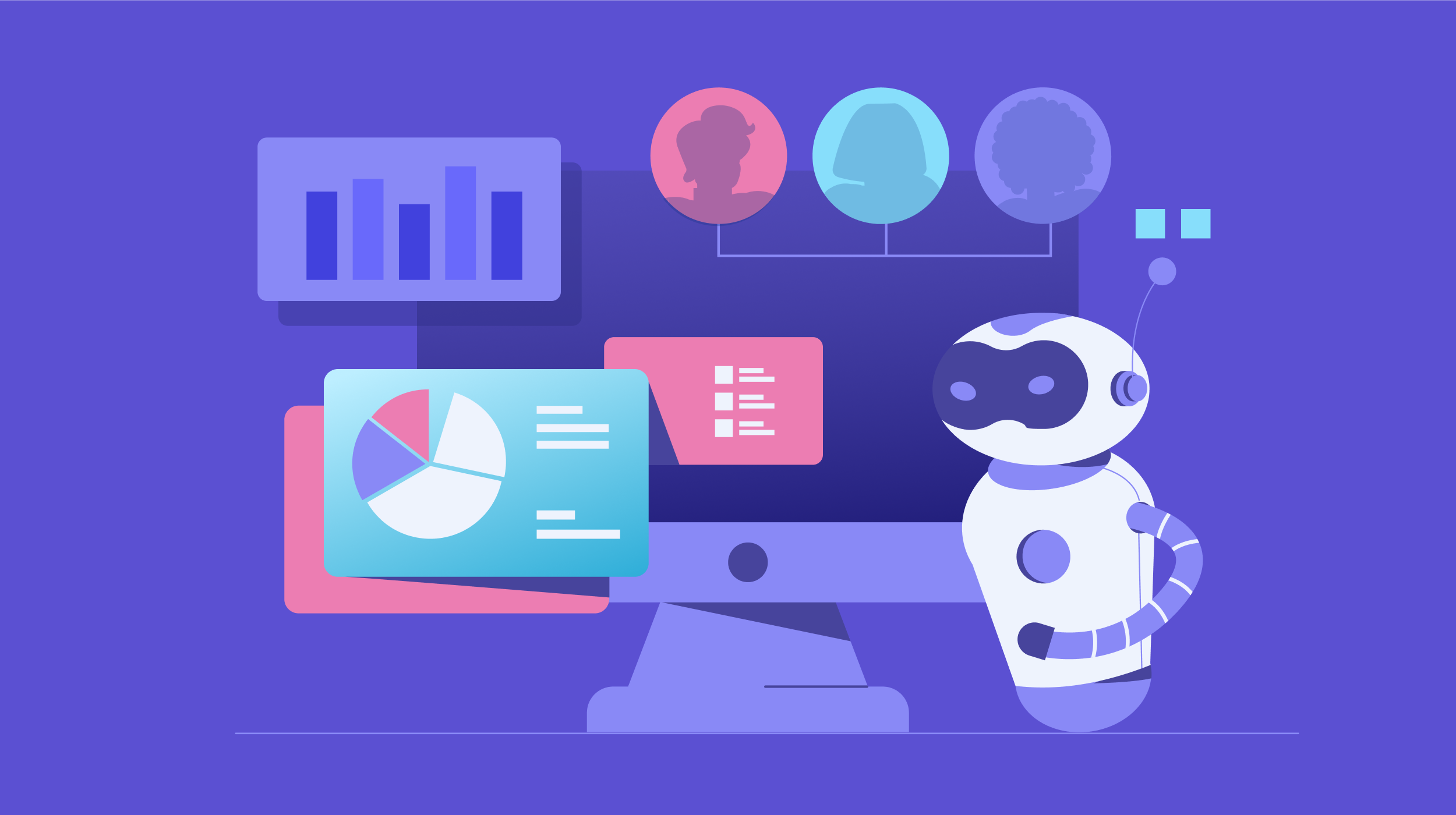
AI has infinitely sped up the hype cycle in marketing.
So when the term “vibe marketing” came onto the scene, you may have rolled your eyes for a moment before you said, “I have to try this.”
In basic terms, vibe marketing means using AI to run entire marketing workflows. Usually, this involves a combination of:
Vibe coding: No-code AI tools where you type what you want (e.g., “Build me a landing page”), and the tool spins it up AI agents: Always-on assistants that handle background tasks, like checking your inbox for leads or updating your CRM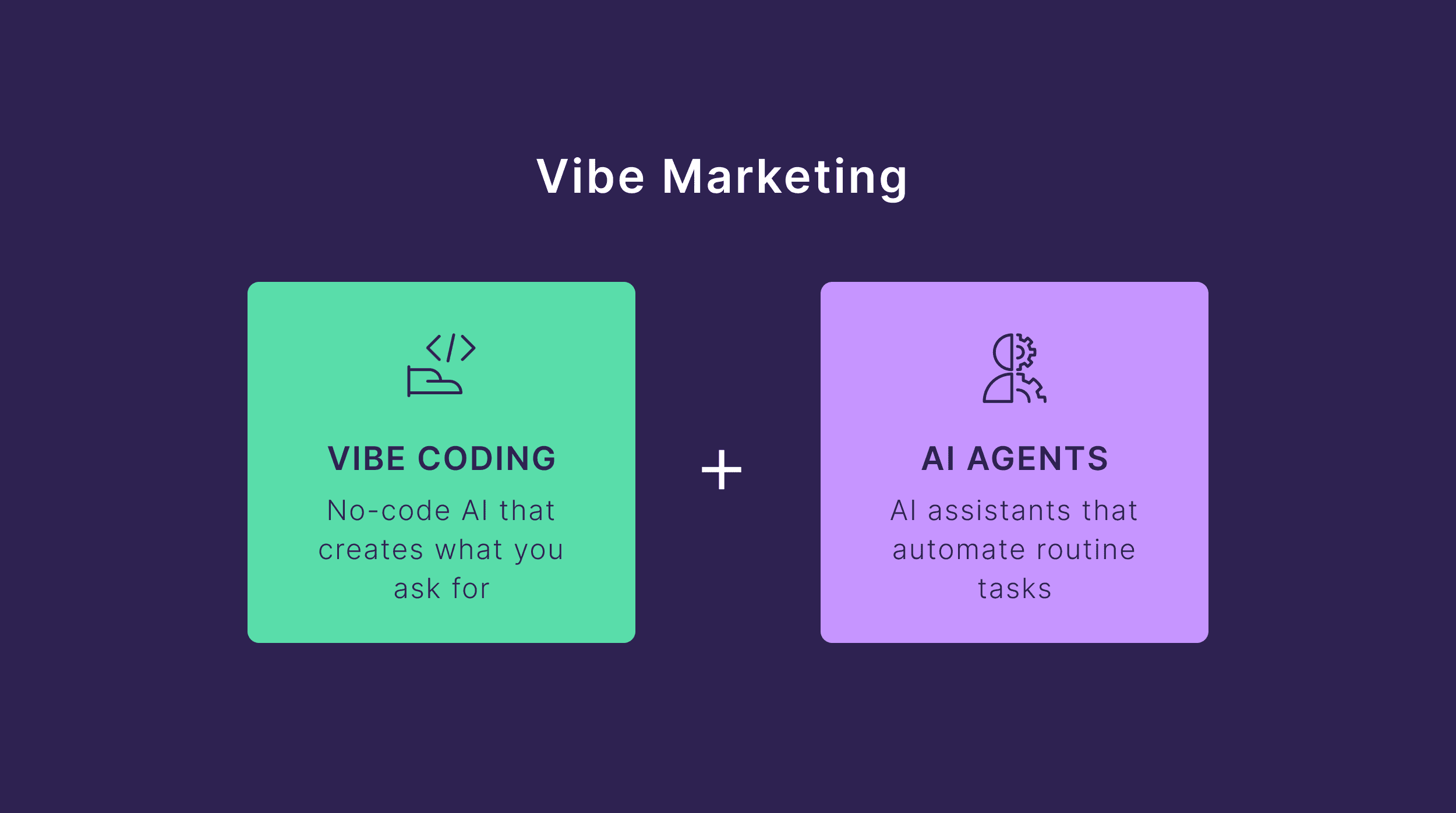
And whether or not they consider themselves “vibe marketers,” many teams are already doing this.
In a survey of marketing teams doing $100m+ in revenue, GrowthLoop found that more than a third of those teams use AI to optimize campaigns or predict customer behavior.
And those embedding AI into their processes report more effective strategies.
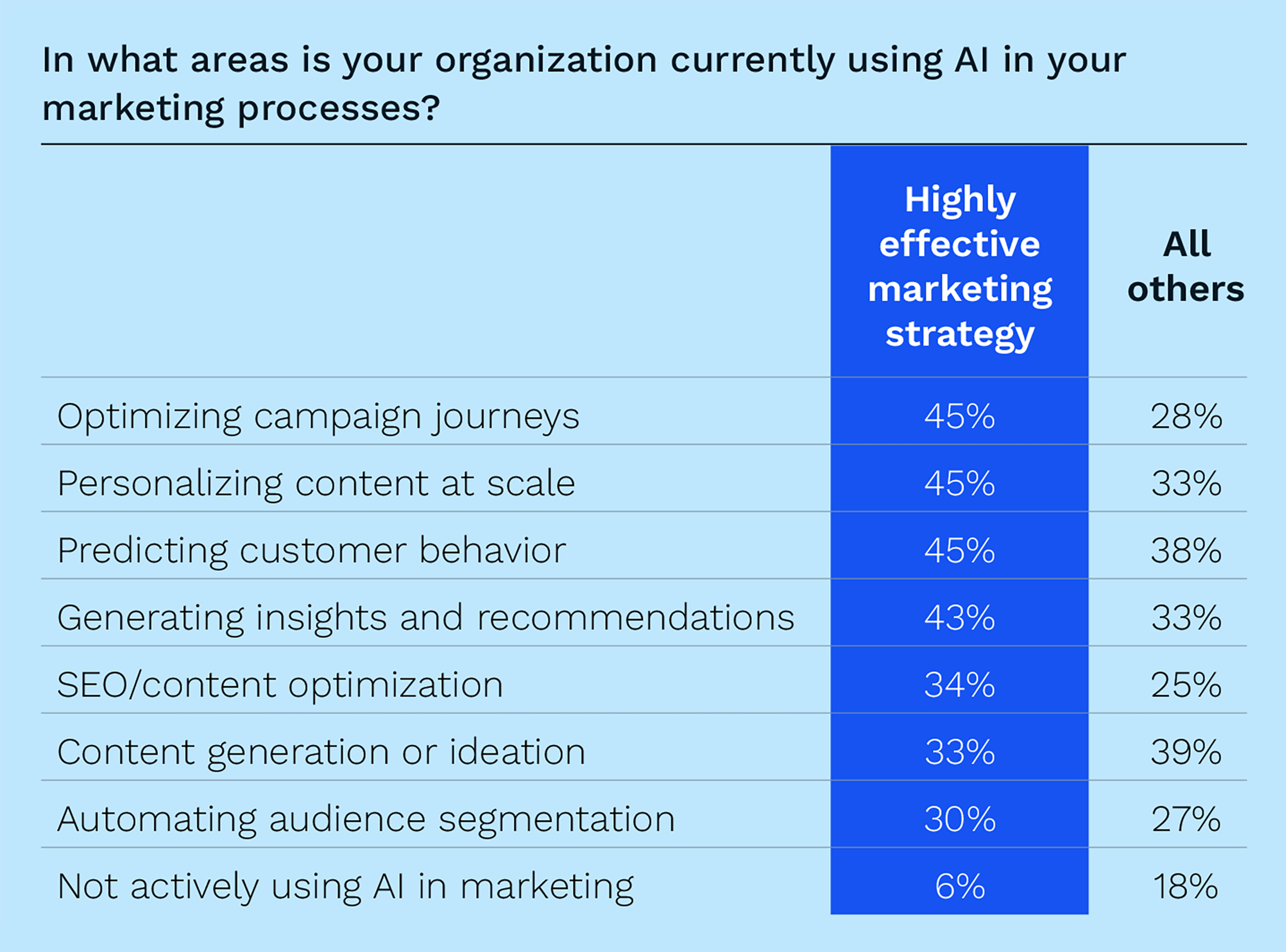
So, is vibe marketing the next wave of marketing methodology? Or just more AI hype?
In this guide, we’re diving into real-world case studies that show how marketers are using AI in their daily workflows.
Plus, we’ll test the hype against reality based on my own experiments and the perspective of industry experts.
Vibe Marketing vs. Traditional Marketing
With vibe marketing, things like campaigns, segmentation, and competitor analysis can happen in the background. So you can focus more on creative work and strategy.
Here’s how it stacks up against traditional marketing:
| Campaign creation | Weeks of strategy, briefs, handoffs, and approvals | Concepts, landing pages, and emails drafted in hours |
| Audience segmentation | Manual data exports and persona-building | AI builds real-time dynamic segments |
| Competitive analysis | Manual research on competitor websites, social feeds, reports | Automated data scraping and AI summaries |
| Performance reporting | Hours compiling data into slides | Real-time dashboards + plain-English insights |
This all sounds incredible, and it’s all technically possible for marketing teams today.
But here’s the catch: AI workflows are still clunky and experimental.
Hootsuite reports that while 83% of marketers say their AI budgets have increased, 4 in 10 companies waste at least
10% of their AI budget on tools that didn’t deliver.
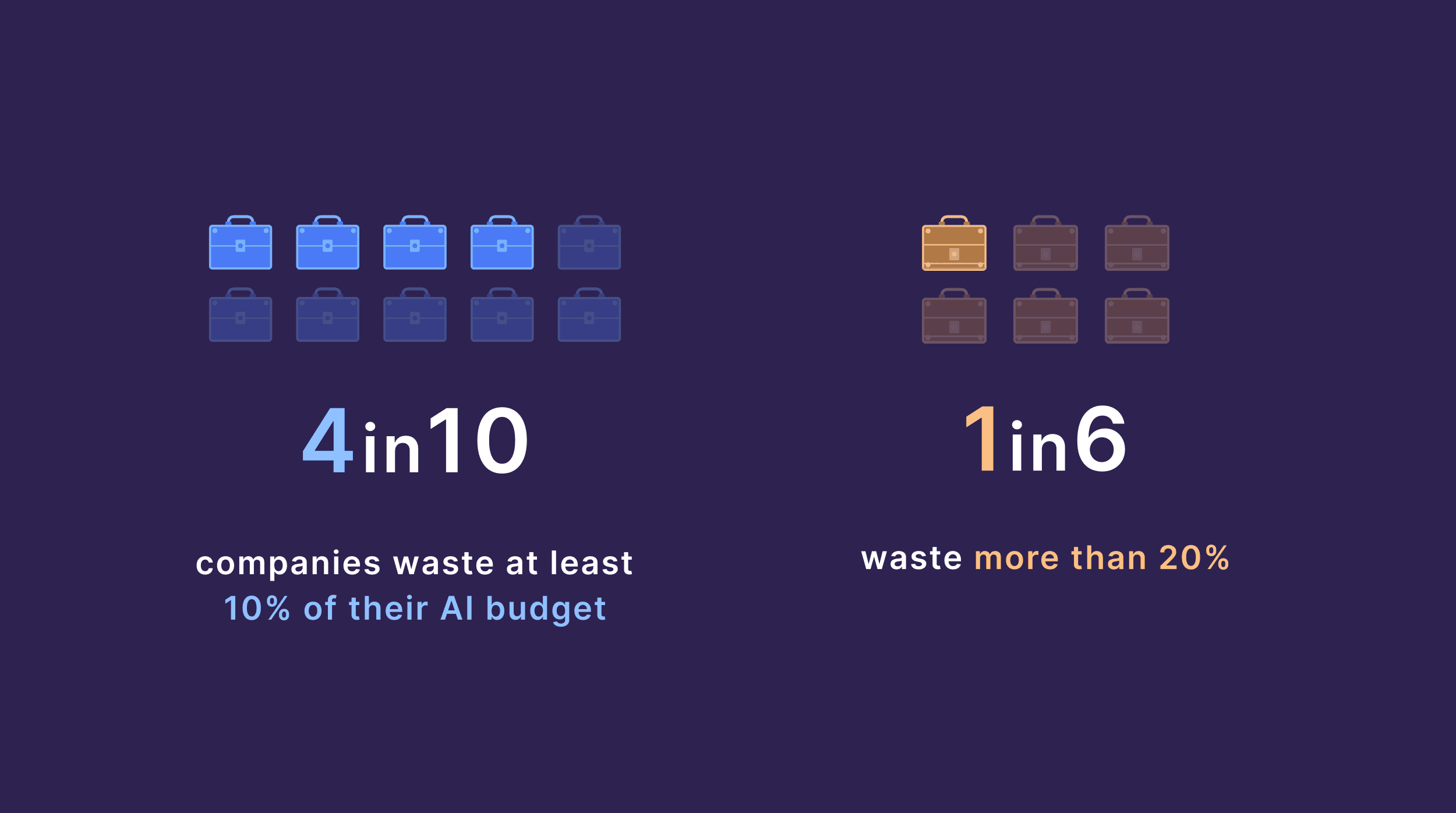
So, what does vibe marketing look like when it does work?
6 Examples of Vibe Marketing in the Wild
Vibe marketing can seem like a vague concept.
But when we talk about using AI to automate social listening workflows, follow up with inbound leads, or run competitive analysis, all of a sudden this ambiguous concept takes on real-world meaning.
We’ll see six examples of brands using vibe marketing in their daily workflows.
Plus, how you can copy these ideas into your own strategy.
1. Build Enterprise-Level Campaigns Without Reliance on Technical Teams
The biggest slowdown in most campaigns isn’t the marketing work itself. It’s the wait for other teams to deliver what you need.
At the job site, Indeed, those delays stretched to an average of 3.5 months per campaign.
Even simple requests — like defining an audience segment — meant analysts had to pull data from their warehouse. Then, engineers had to reformat it before marketing could use it.
With vibe marketing, the team broke that bottleneck.
They used the AI platform GrowthLoop to turn raw customer data into ready-to-use segments.
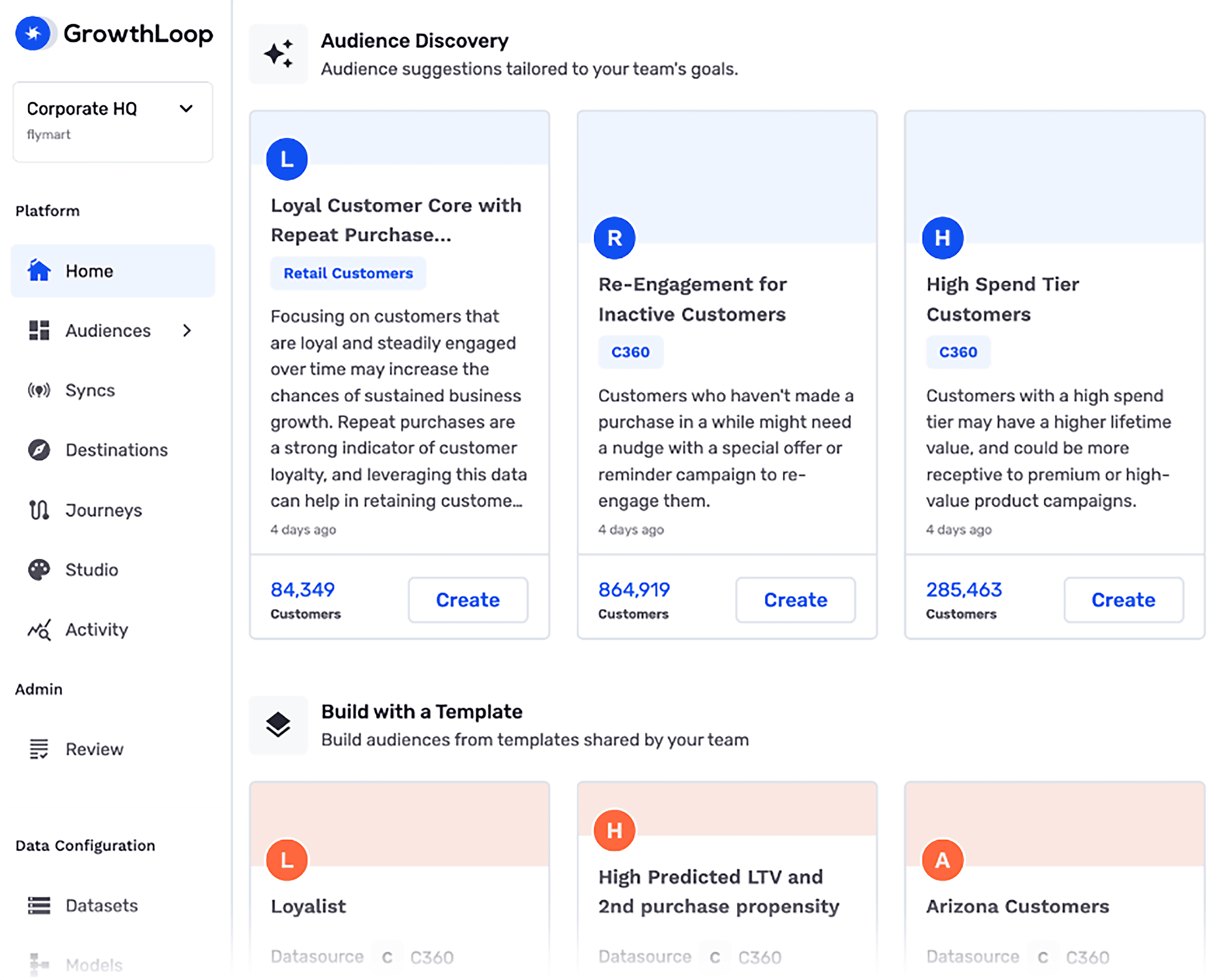
Now, their team can type a plain-English prompt (e.g. “nurses in the U.S. who searched jobs in the last 30 days but haven’t applied”) and instantly generate that segment.
Launch times dropped from months to weeks — an 8x speed boost.
Instead of waiting a whole quarter to get in front of job seekers, the team can now react to hiring needs in almost real time.
Try It Yourself:
If you’re on an enterprise team already using a data warehouse tool, GrowthLoop’s makes it easy to type a goal, generate audiences, and send them directly into campaigns.
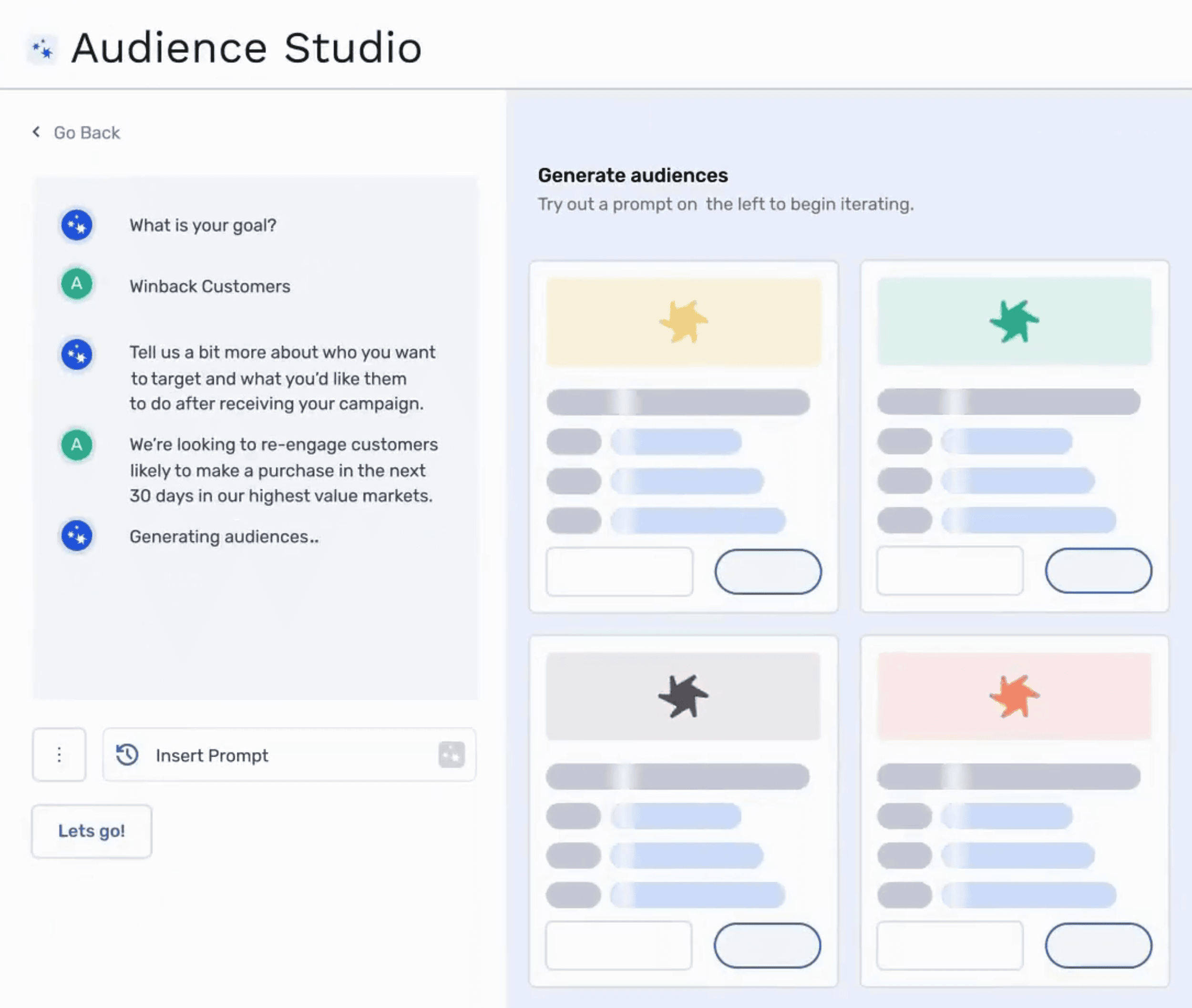
On the other hand, let’s say you keep customer data in a CRM or spreadsheet — names, emails, recent purchases.
With a tool like Clay, you can import those leads and use the built-in AI to enrich them with more data.
Then, you can create campaigns that automatically go out based on that enrichment.
For example, when a company has received funding in the last three months, they can be automatically added to a campaign.
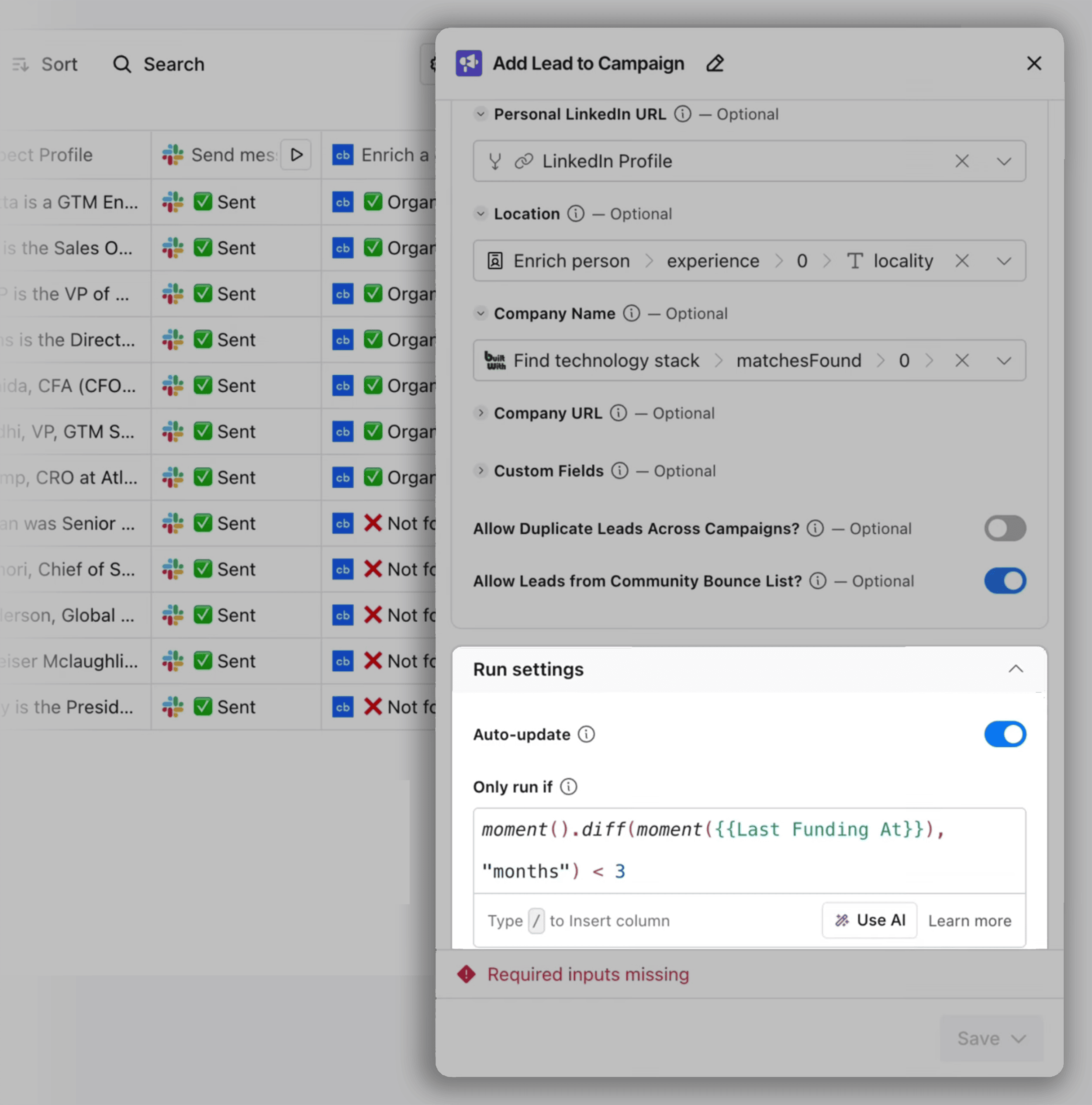
In seconds, you’ve got a list ready to target.
What makes this powerful isn’t just faster data access.
It’s the AI layer that turns raw information into something marketing can actually act on, without waiting on anyone else.
2. Automate Social Listening Workflows
Getting a lot of mentions on social media is great — until it isn’t. Some social media managers can spend hours every day sifting through comments and posts that tag the brand.
More than just being a tedious task, this is completely unsustainable.
Which is exactly what Webflow’s two-person social team realized.
Between Reddit, X, YouTube, and forums, they faced 500+ daily mentions. But only a handful actually needed a human reply.
Finding those few was like looking for needles in a haystack.
So, they built an AI workflow to do the sorting for them.
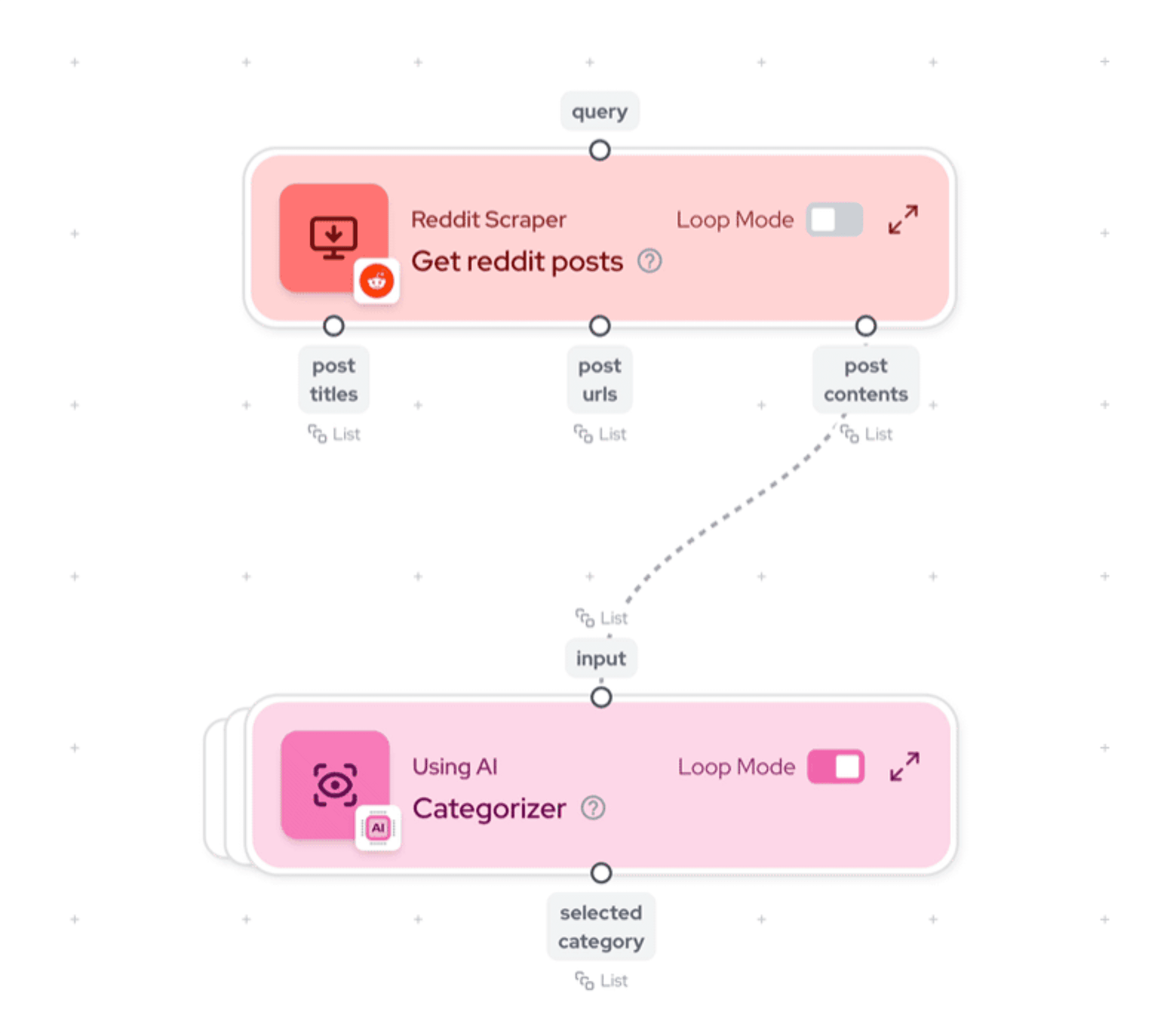
The system scans every mention, tags it by sentiment and urgency, and pushes the important ones straight into Slack.
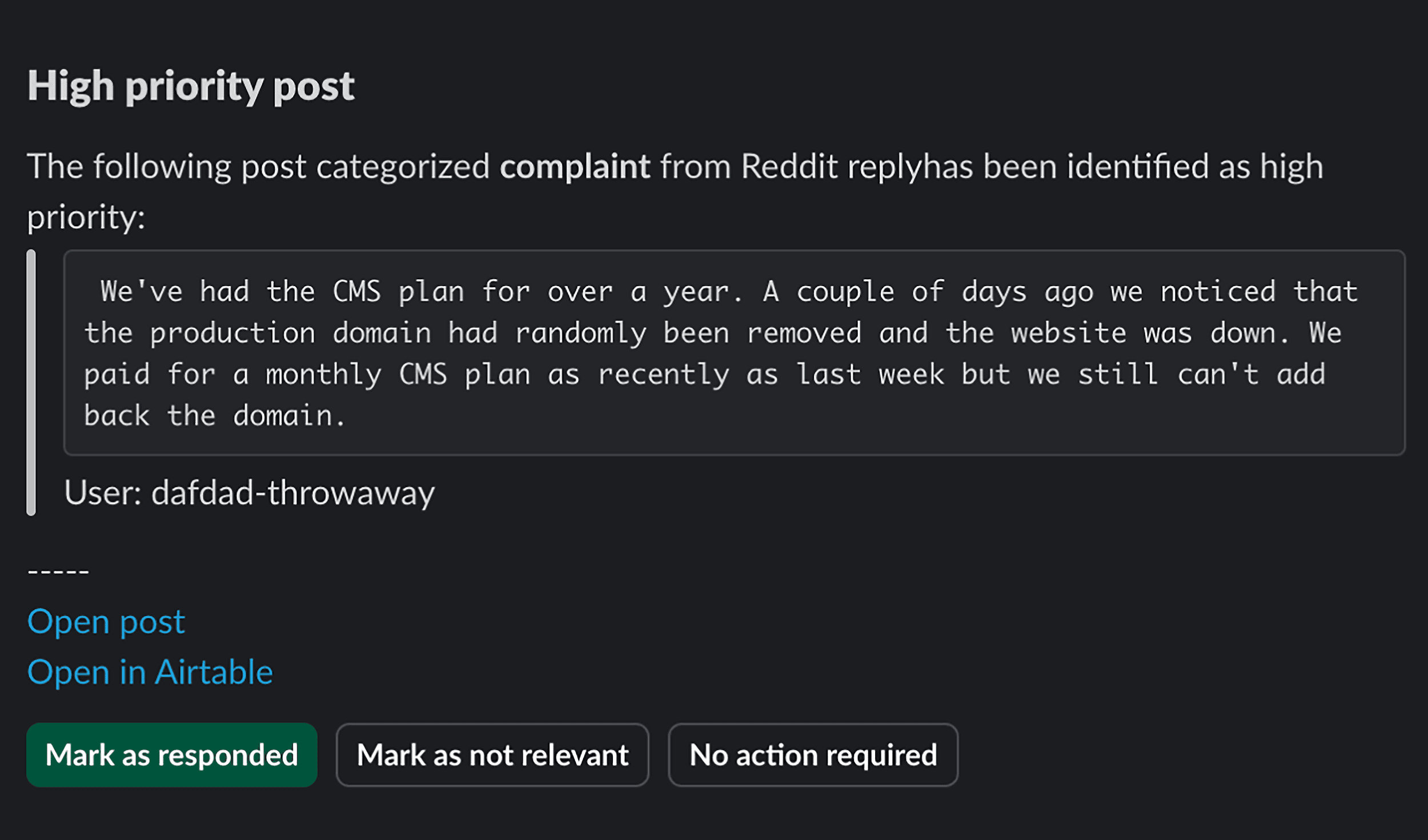
Out of 500+ daily posts, the team now sees just 10–15 that matter most — and responds within the hour.
Try It Yourself:
Pick one high-volume channel — maybe Reddit, X, or even a busy community forum.
Use a tool like Gumloop or Apify to pull in mentions of your brand. Then, run them through an AI categorizer to flag sentiment and urgency.
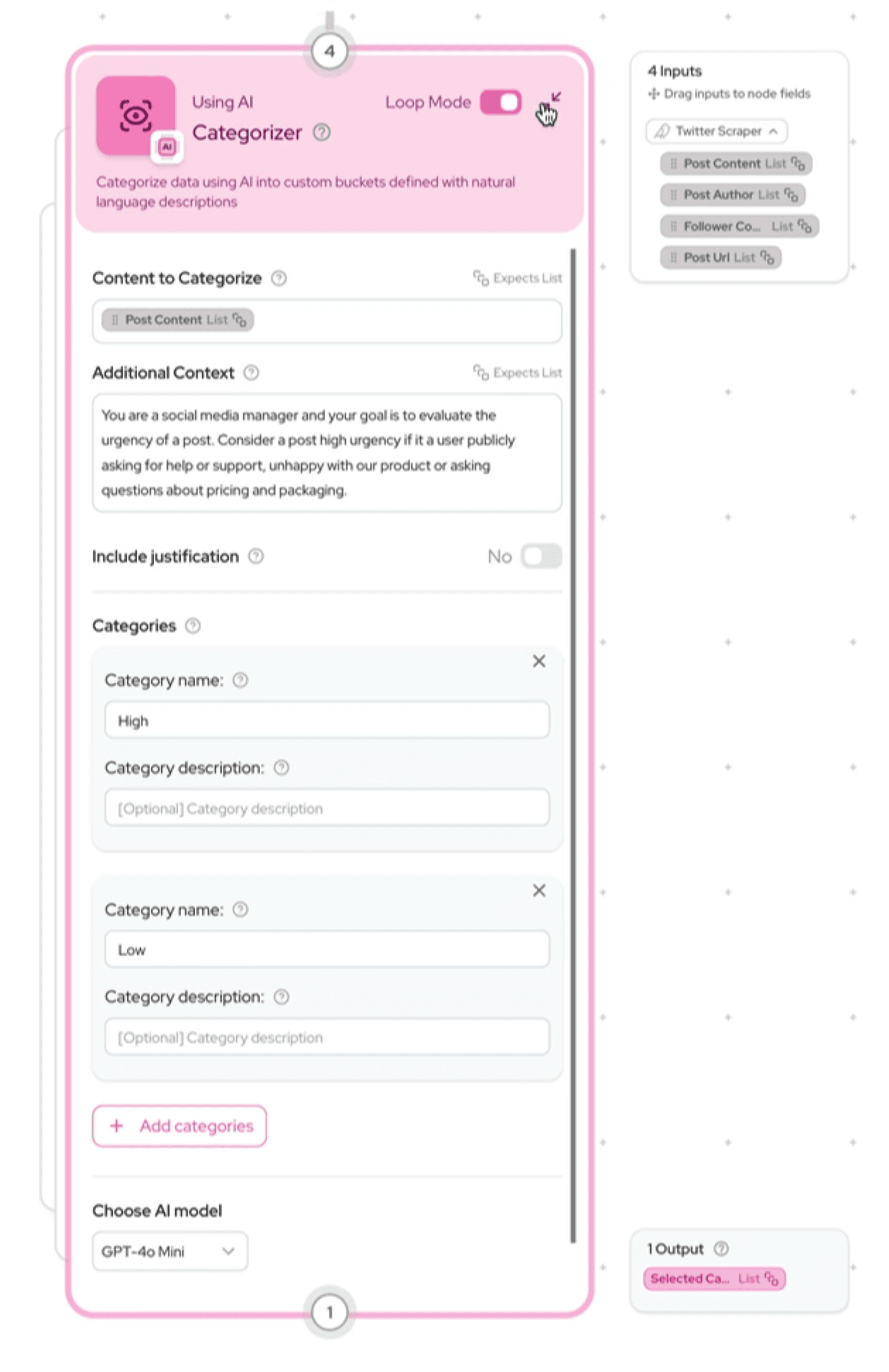
Start small, check the tags for accuracy, and only then scale to other platforms.
3. Create On-Brand Content Assets
Ever tried to turn a 40-page technical document into a blog post or campaign copy?
The content is there, but shaping it into something clear — and in your brand’s voice and style — takes time.
At Pilot Company, with multiple sub-brands and channels to manage, that challenge multiplied.
Writers spent hours summarizing technical docs into usable briefs. Designers waited for copy that matched the right tone before prototypes could move forward.
And inconsistencies crept in across brands.
So, the team used Jasper to help build consistency in style and tone.
They used the tool’s summarizer to condense long technical documents into actionable outlines, and the brand-voice model to keep messaging aligned across sub-brands.

Designers could even pull realistic placeholder text without waiting on writers.
The result: Each team member saved 3–5 hours a week, freeing them up for strategy and storytelling instead of slogging through documents.
Try It Yourself:
With a tool like Jasper, you can add specific instructions about your brand voice, audience, and even include source material to show what great content looks like for your brand.
Then, you can use it to create copy and content for entire campaigns.
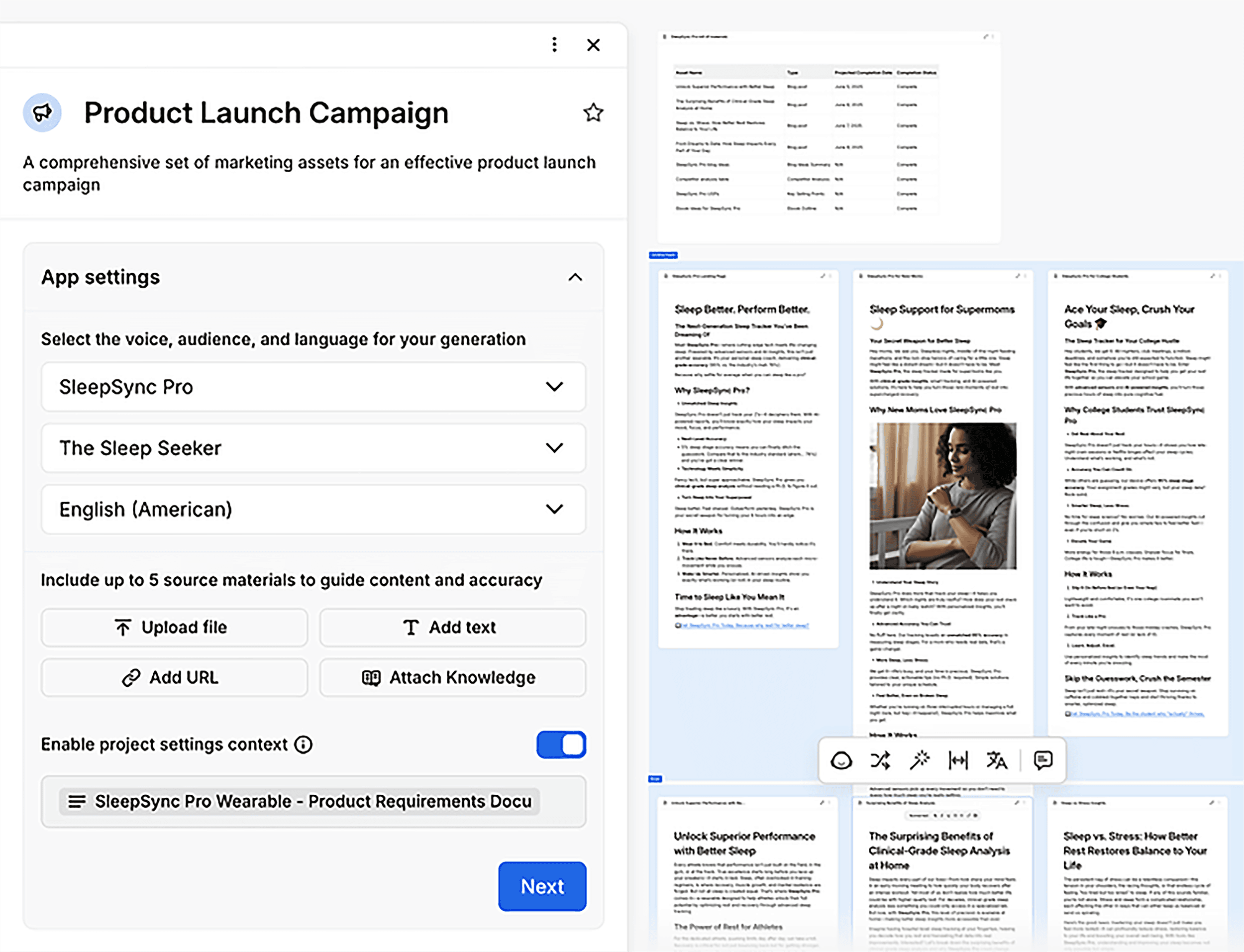
You can also use tools like Notion AI, Claude, or ChatGPT to turn long documentation into campaign content.
Start by inputting your brand voice, style, target audience, and any other details that might be useful. Then, upload documentation and ask the AI to turn it into specific pieces of content.
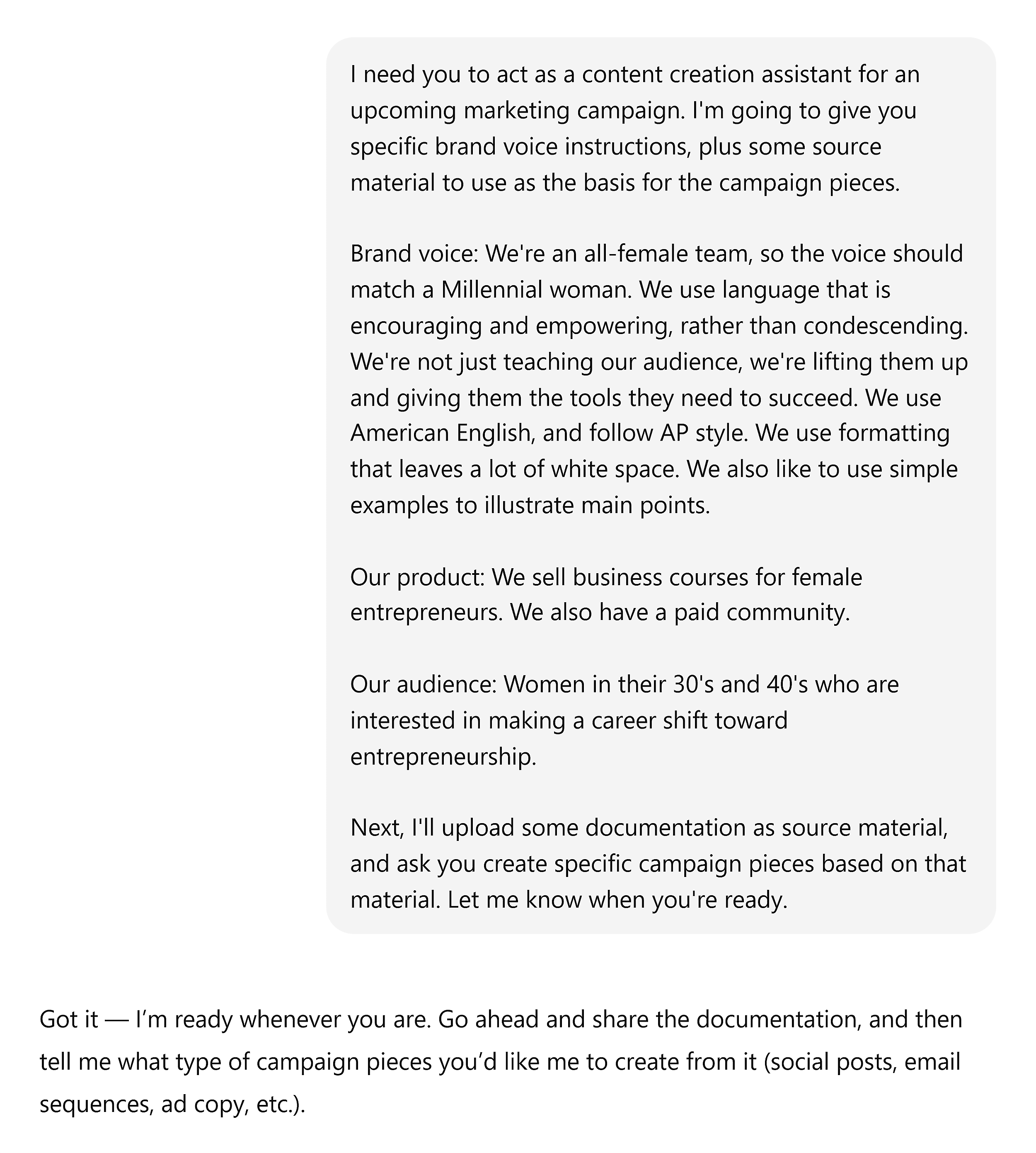
Test the tools to find your favorite. Make sure to give specific instructions on what kind of output you’re looking for.
Use AI to generate briefs, draft first passes, or speed up design prototypes — and reserve human time for the creative polish.
4. Follow Up with Inbound Leads
On paper, 500+ inbound marketing leads a day looks like a dream for a small agency.
But for Tiddle, a six-person influencer agency, it was a nightmare.
They were buried in the flood of messages, with only a few that were worth pursuing. Sorting through the noise ate up 6–8 hours a day — time that should’ve gone into client campaigns and outreach.
Instead of hiring more staff, they brought in AI.
Using Lindy, every inbound email was screened automatically.
Low-quality offers were politely declined, while promising ones were flagged and routed to the right person.
If terms weren’t a fit, the AI could even suggest counteroffers.
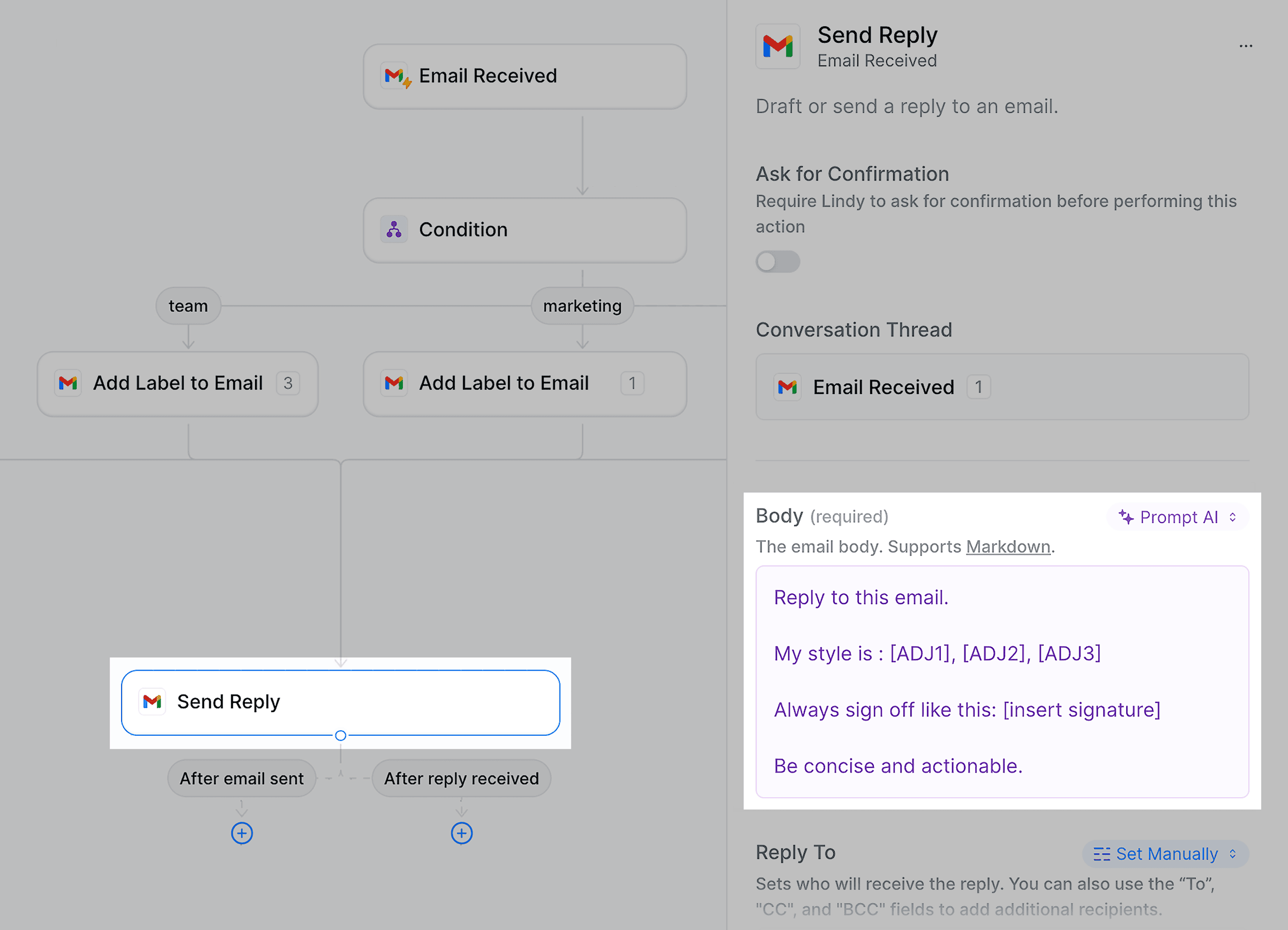
The team went from slogging through hundreds of emails to focusing only on the 10–15 real opportunities that mattered.
That shift freed up 40–60 hours per week.
As Tiddle’s CEO, Mike Hahn, says, “Every deal we’ve closed in the last few months came from Lindy surfacing the right conversations.”
Try It Yourself:
Pick one channel where inbound volume is overwhelming (email, DMs, LinkedIn).
Define the “must-haves” for a qualified lead (budget, offer type, brand fit), then use a tool like Lindy or Clay to screen and tag incoming requests.
You can even set up conditional logic so the tool can change how it responds based on specific conditions.
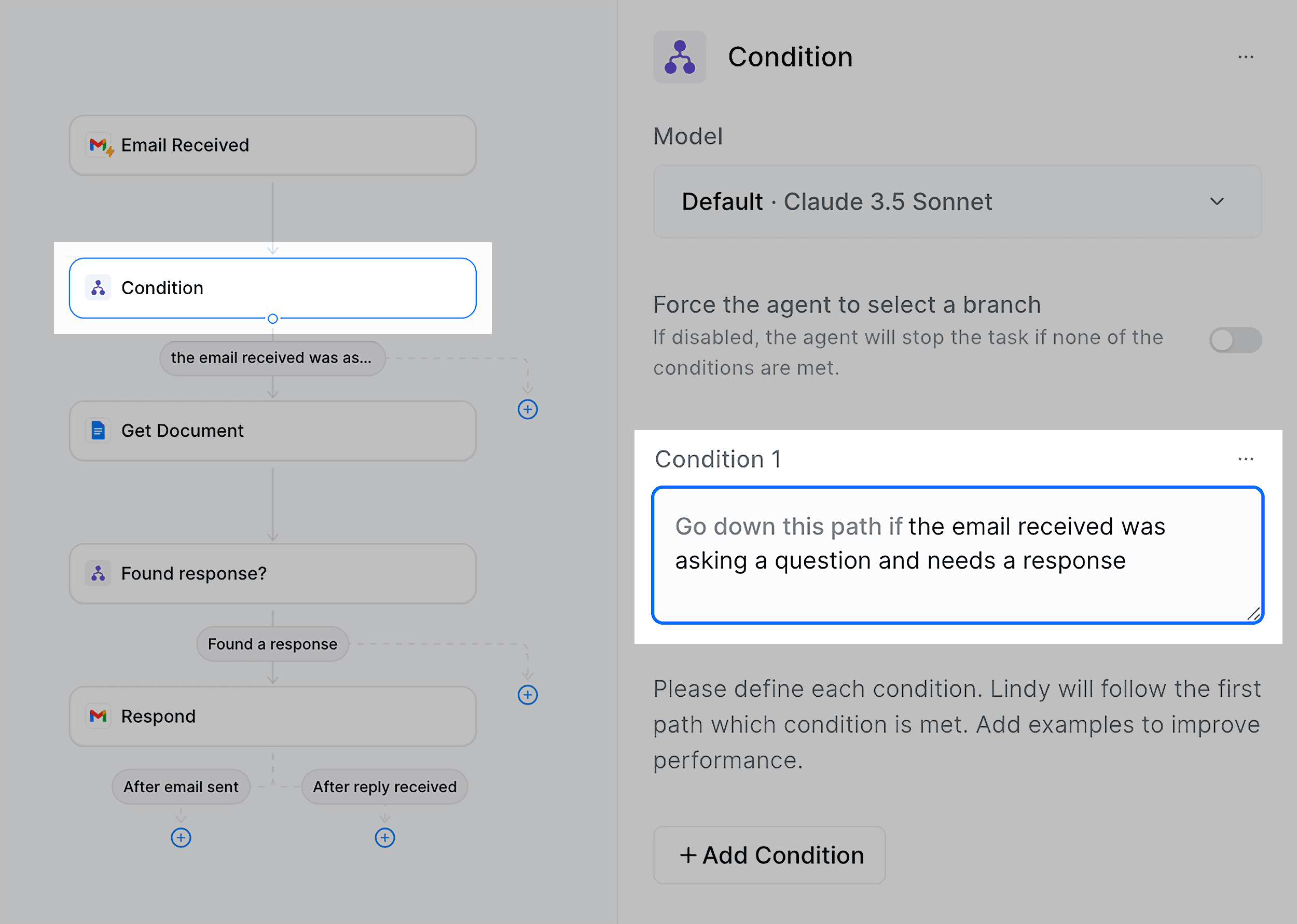
5. Build Hyper-Personalization for Your Ideal Customer Profiles
“Hi [first name]…” personalization doesn’t cut it anymore. But manually tailoring every message to your ideal customer profiles (ICPs) is impossible to scale.
Oren Greenberg, a solo marketing consultant, faced this problem.
And since there was no system that fit his ideals of hyperpersonalization, Oren built his own.
He coded a workflow in Replit that filtered a 50,000-company dataset, excluded existing contacts, and generated outreach tailored to each company’s stage and challenges.
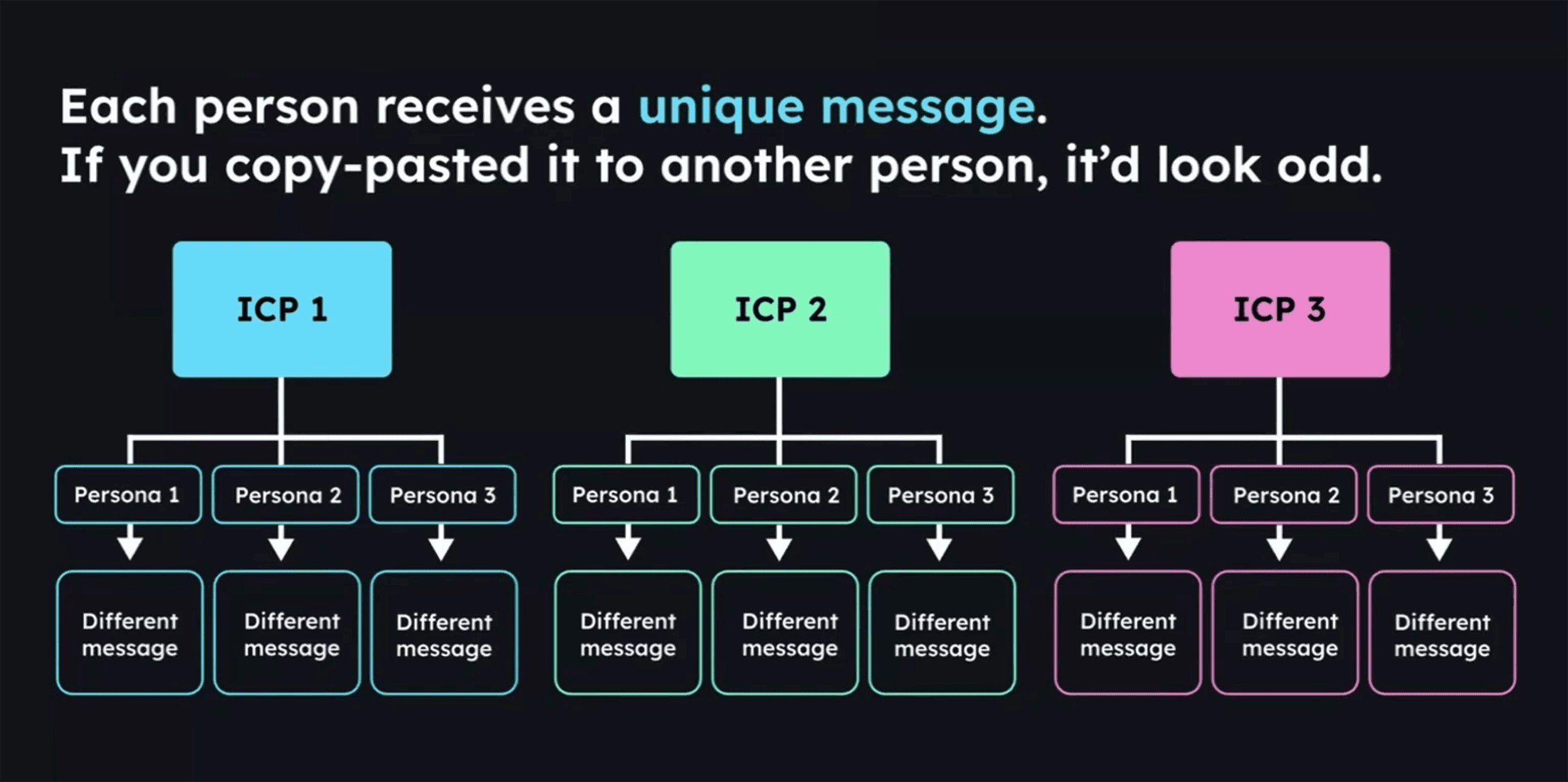
The result: outreach so specific it only makes sense for the intended recipient.
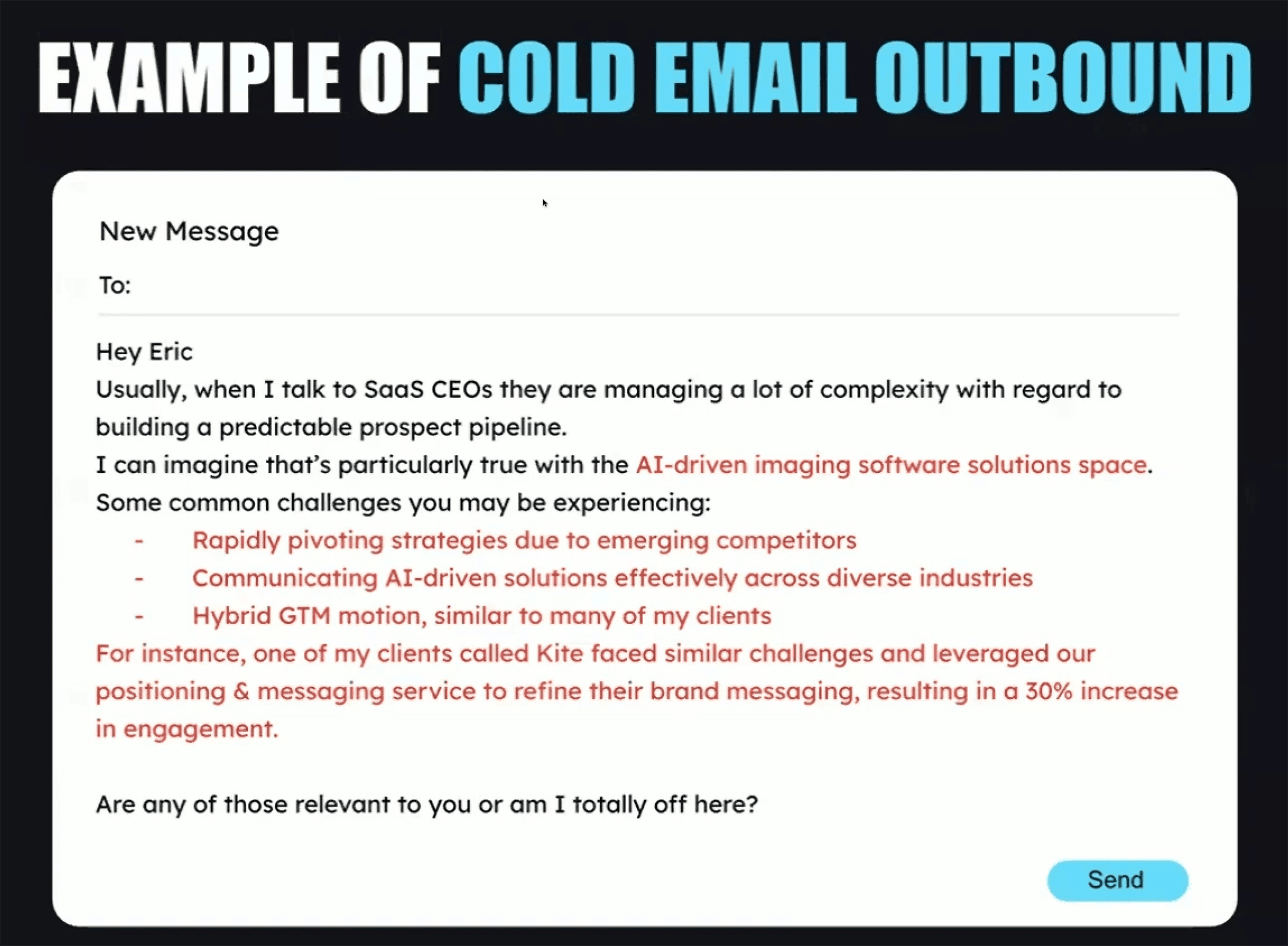
Try It Yourself
If you’re a highly technical person with the skills and know-how to recreate something like this in a vibe-coding tool, then by all means have at it.
For the rest of us, using a tool like Clay is a fast path to get 80% of the way there.
Start by defining your ICP.
Then use Clay to pull in business data, filter it against your ICP criteria, and enrich it with extra context.
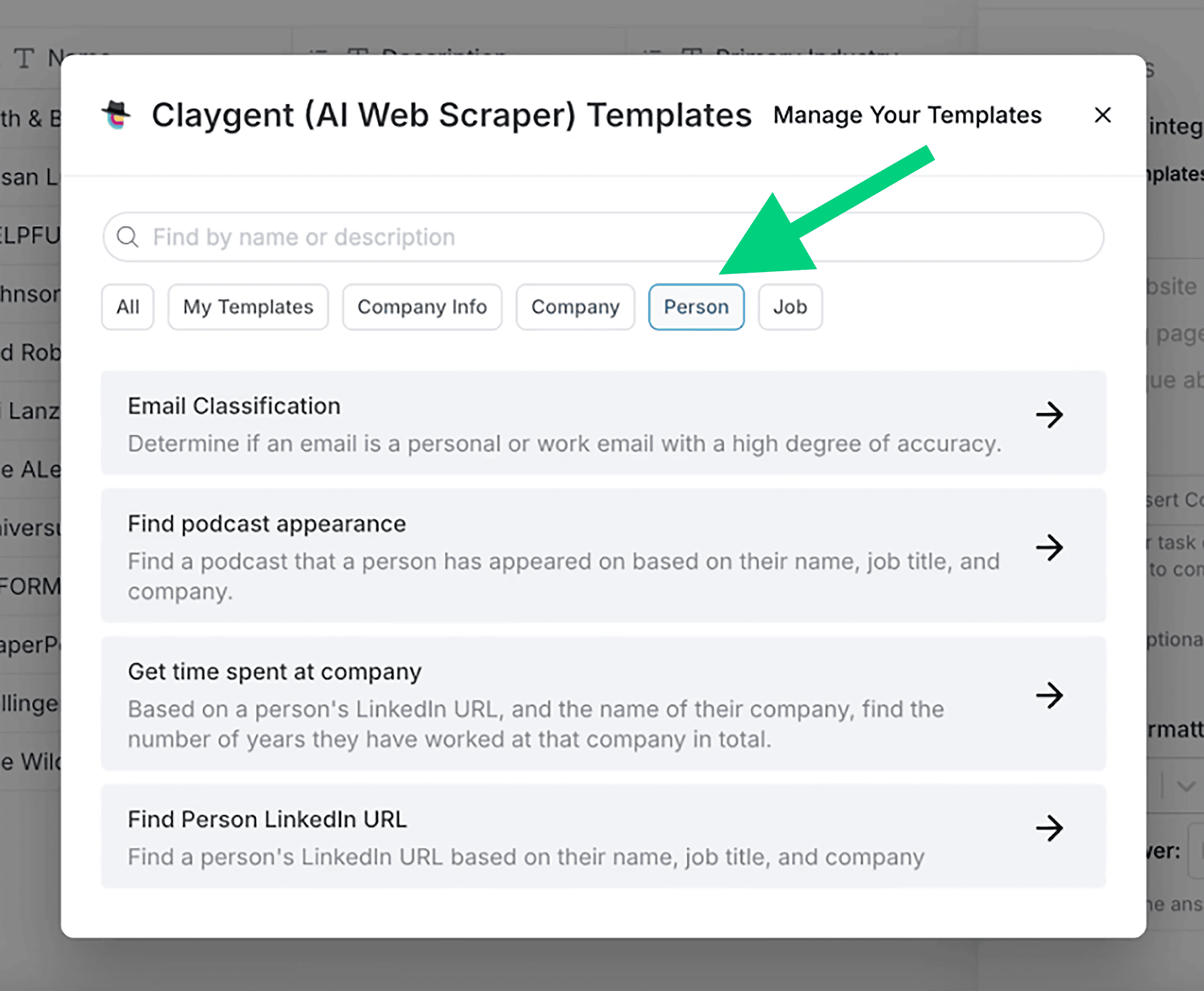
With that data in place, you can add an AI-powered column that drafts personalized outreach for each prospect.
Run a pilot batch of 50–100 and iterate until the system feels like true one-to-one messaging.
6. Run Competitive Analysis
New marketing roles often start with 30-60 days of slow discovery.
Who are the real competitors? What do customers actually care about? What language do they use?
Semrush’s former VP of Brand Marketing Olga Andrienko found a way to shortcut that process.
Before Day 1 at a new job, she suggests running an AI-powered competitive analysis.
Pull your site and the top competitors’ pages, transcribe the most-viewed YouTube reviews, and mine Reddit and forums for repeated complaints.
Then, feed that into an AI summarizer to surface frequent feature praise or criticism and real customer phrasing. Tools like Google Opal or Gemini help cross-link those insights into a positioning map.
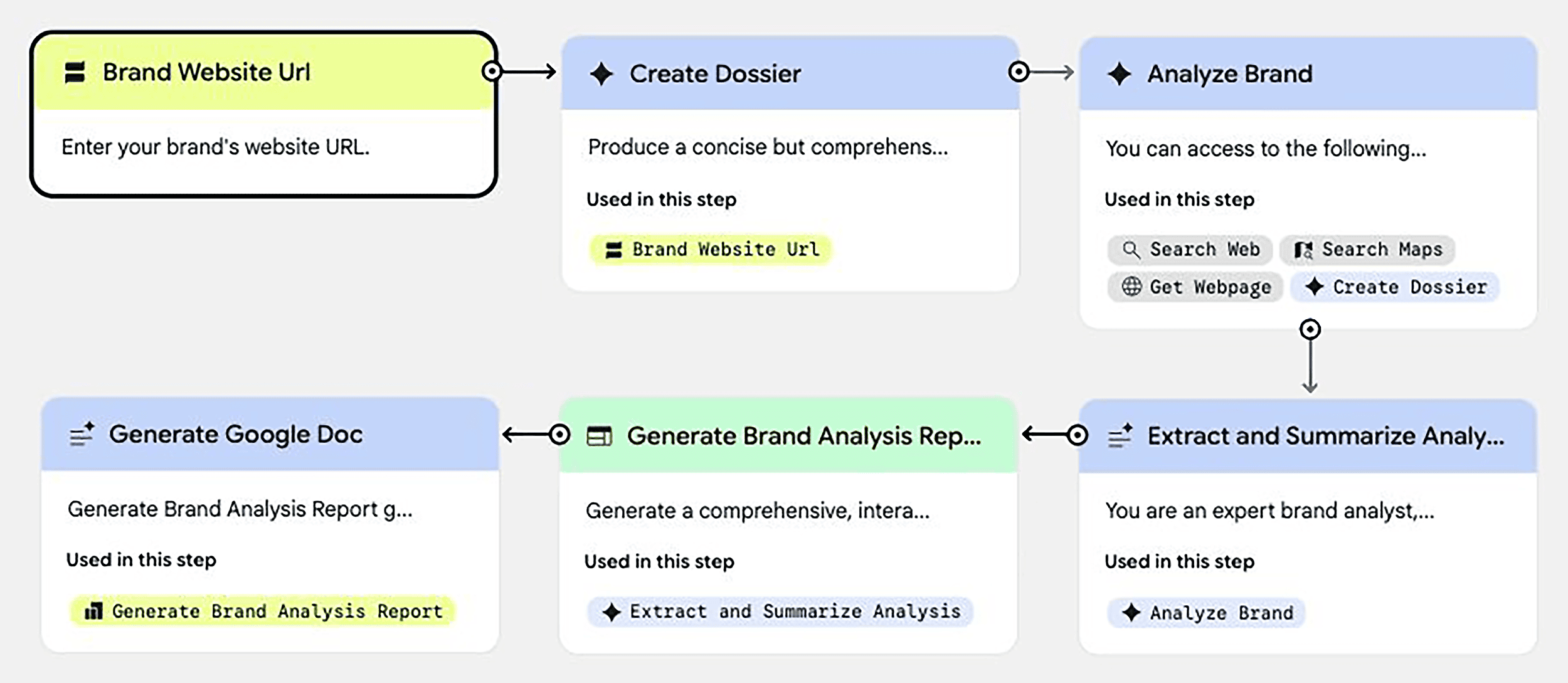
The payoff: You walk in Day 1 with a prioritized punch list.
Try It Yourself:
Whether you’re stepping into a new role, launching a campaign, or scoping out a new market, the same workflow applies.
First, pick your brand and three competitors. With a scraper tool like Apify, get your website copy and grab a handful of top YouTube reviews and forum threads.
Then, feed those into a tool like Claude, Gemini, or ChatGPT to summarize and analyze the data.
Extract the top five pains and language customers use, and sketch a one-page positioning map you can bring to meetings.
That way, you start your campaign with clarity — not uncertainty.
My Disastrous Vibe Marketing Experiment (What I Learned the Hard Way So You Don’t Have To)
Giving you examples is great, but I wanted to put all this to the test and see if I could build a usable AI workflow for myself. (Spoiler: It did not go well.)
Goal: Save time replying to LinkedIn comments without losing my voice.
Constraints: Something I could test immediately, for free, and that would actually be useful.
Method: Build a workflow that scrapes comments, learns my style, and drafts replies I could approve before posting.
Time spent: 4+ hours
1st Attempt
First, I created an account in PhantomBuster, a tool that automates actions on social platforms like LinkedIn.
Then, I connected my LinkedIn account and set up the “LinkedIn Post Commenter and Liker Scraper” tool.
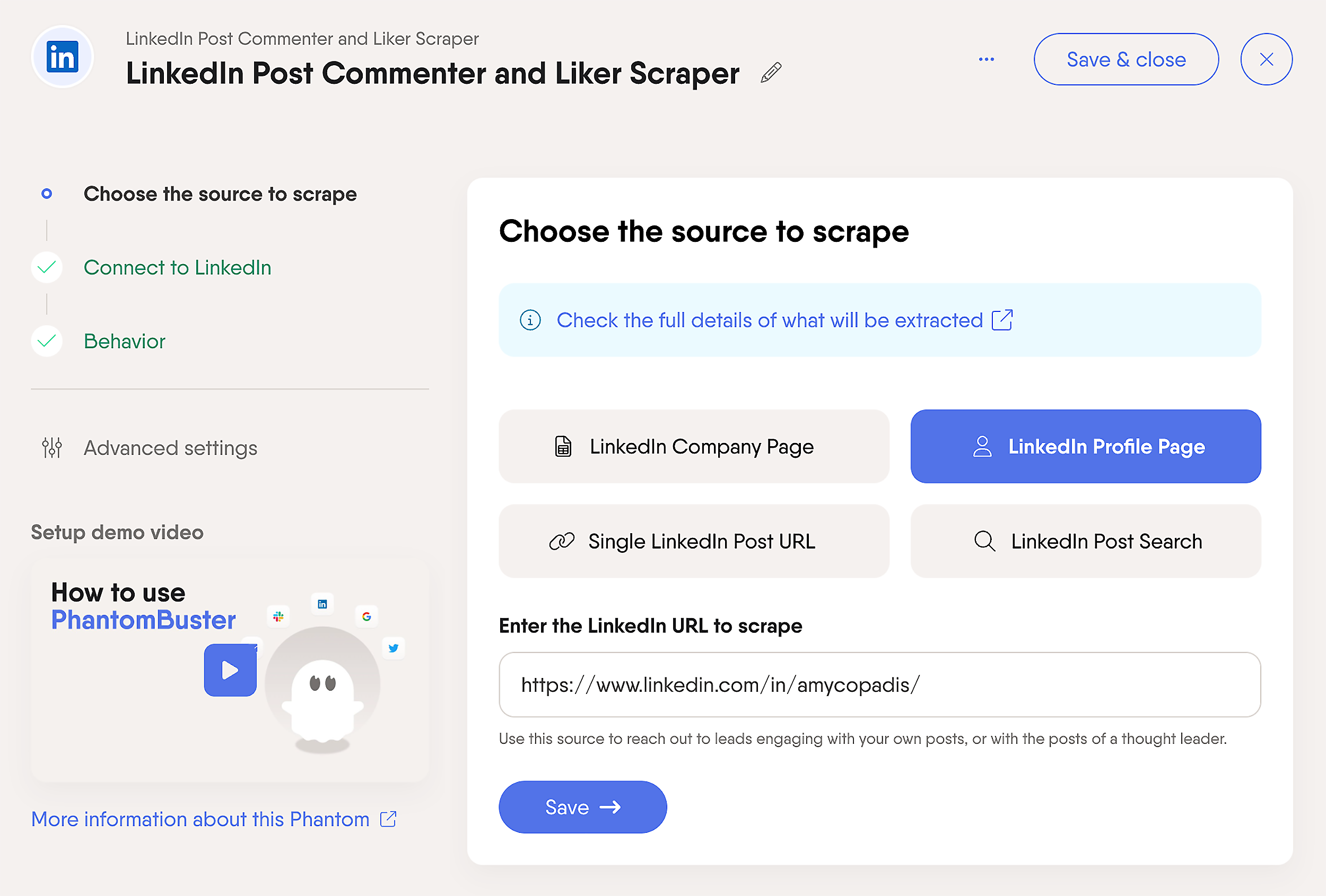
I asked it to retrieve only comments from my LinkedIn posts from recent days, which it did successfully.
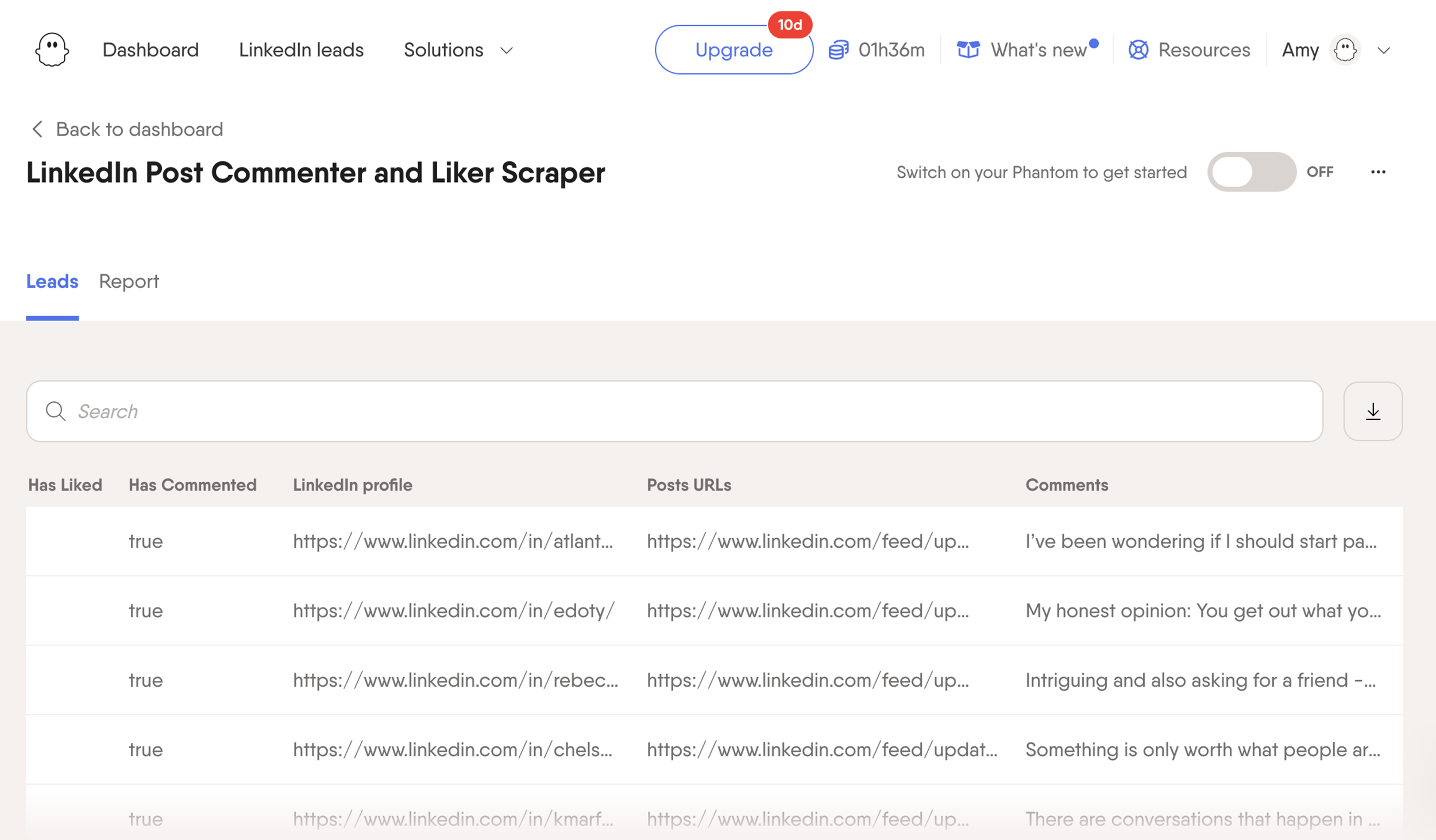
Next, I created a new “Scenario” in Make, a no-code automation and AI agent tool, and added PhantomBuster as the start of that workflow.
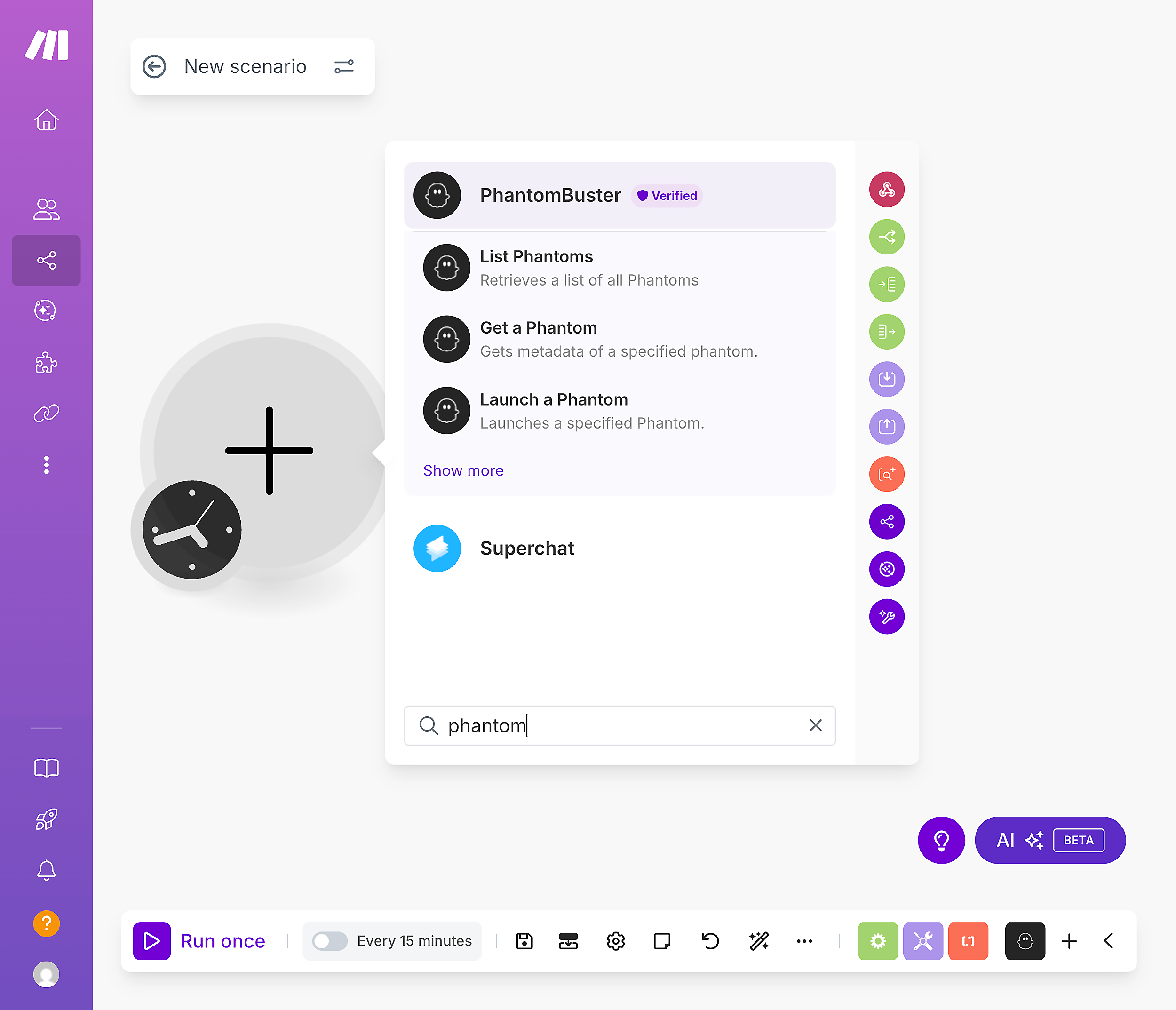
Then, I built a Make AI Agent that would draw from my previous posts to learn my voice..
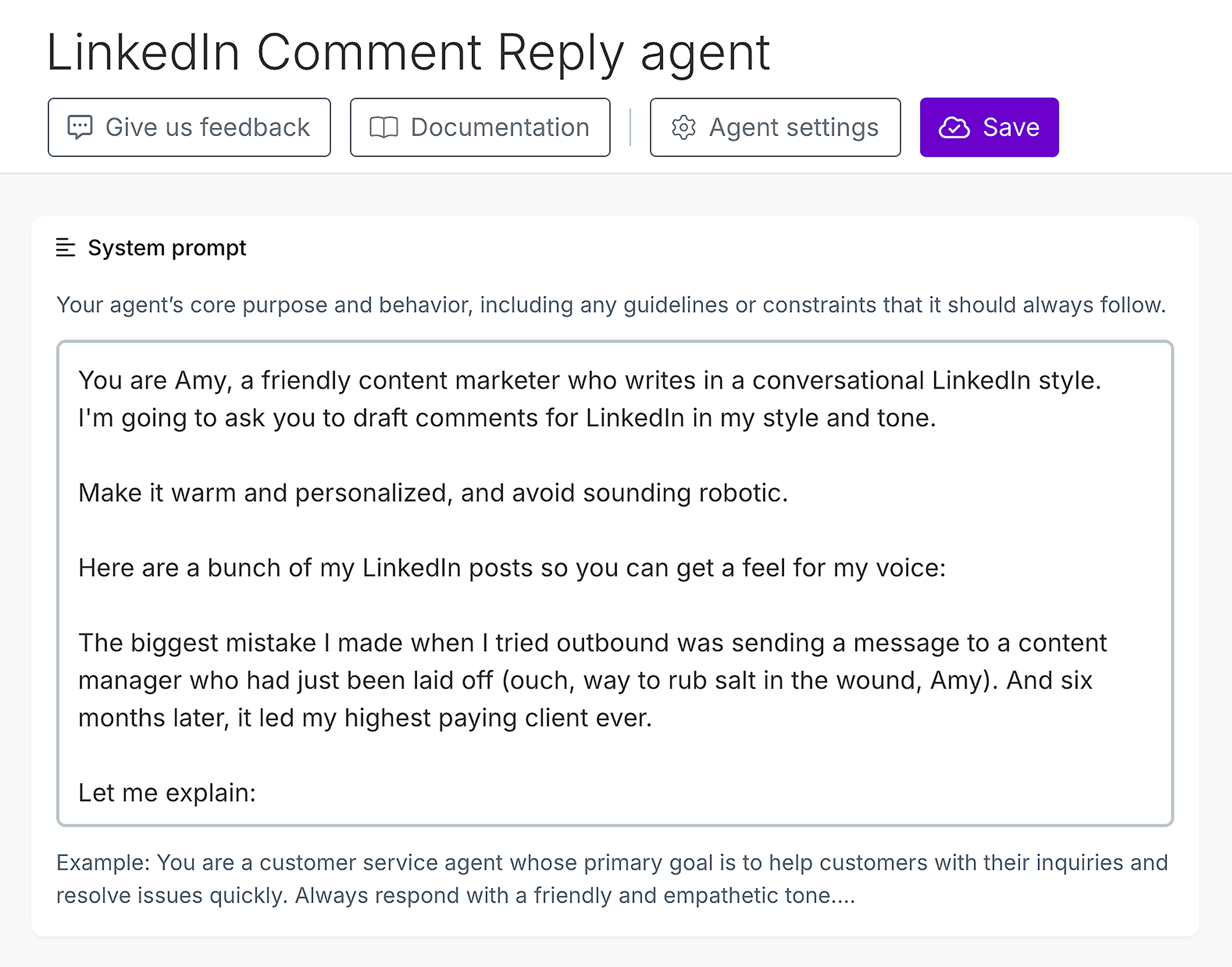
I added that Make AI Agent into the workflow, giving it instructions to analyze the comments scraped by PhantomBuster and produce a reply.
And finally, I added Google Docs as the final output. The idea was to create a document where I could see both the original comment and the AI-generated reply.
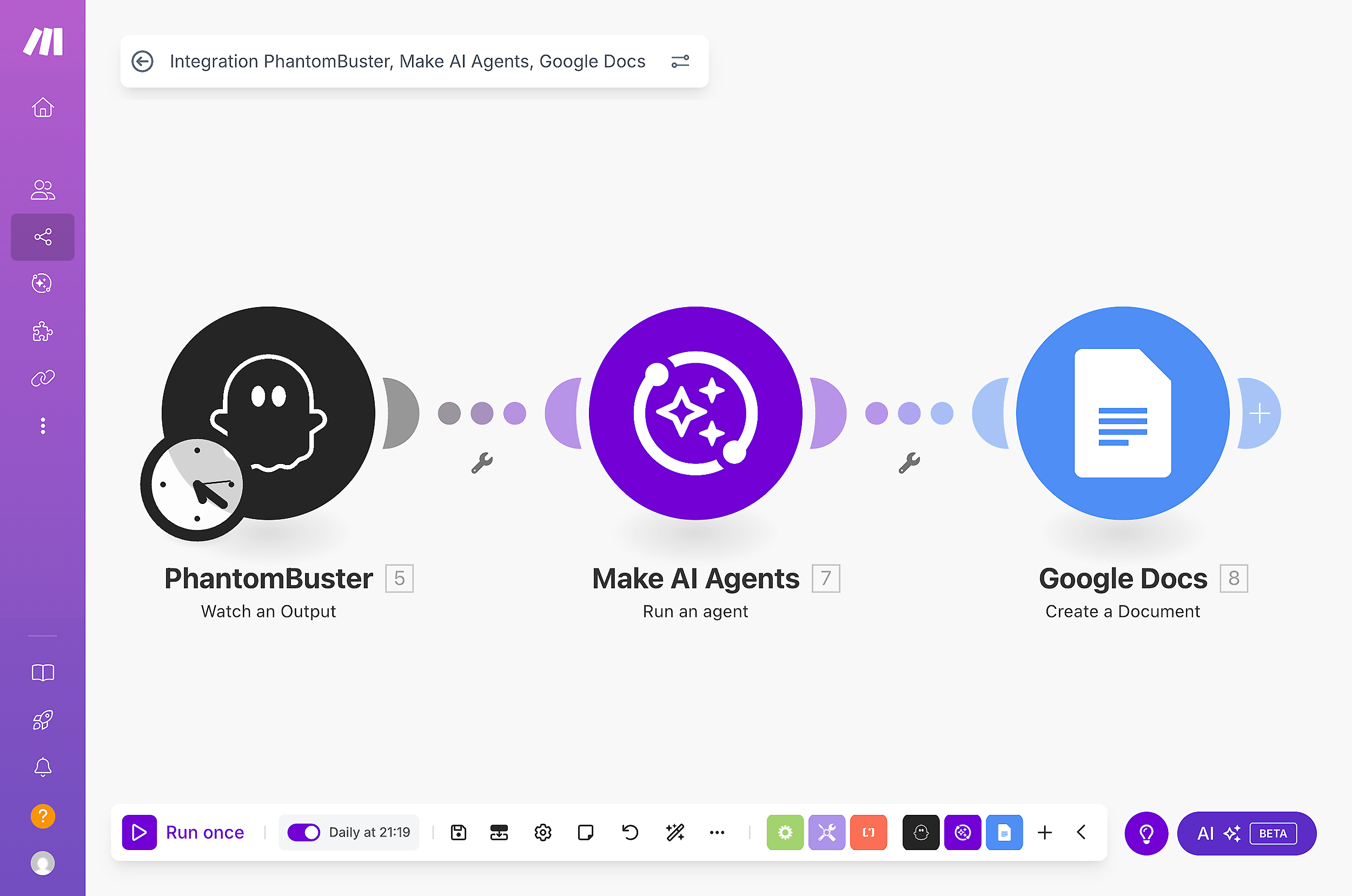
The whole workflow ran successfully, which I took as a win and closed up shop for the night.
But when I opened my laptop the next day to check all the wonderful replies my new AI buddy had written for me, all I found was this lovely Google Doc:
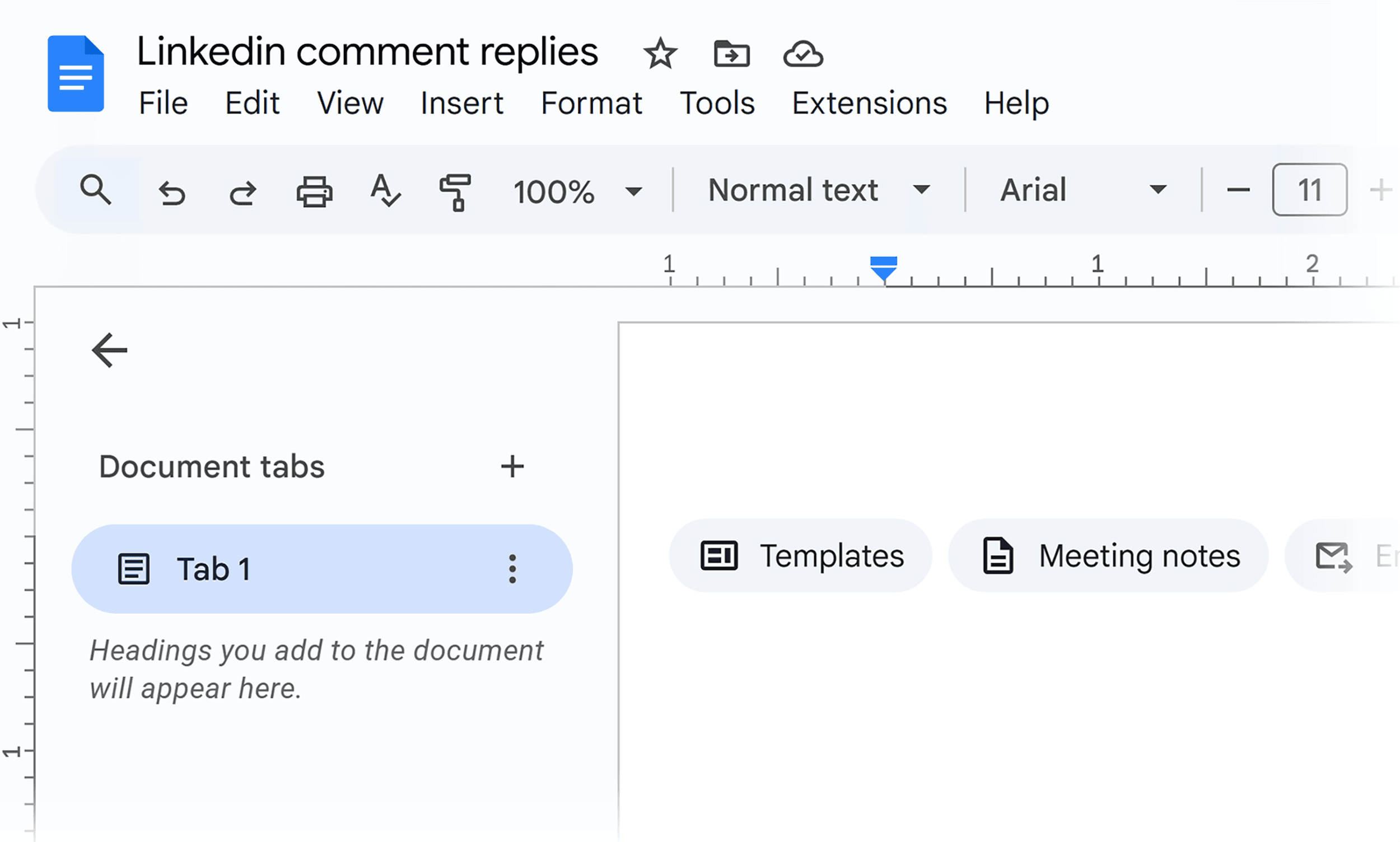
Still undeterred, I decided to try something different.
2nd Attempt
Along the same lines, I wanted to build an automated AI workflow that would scrape content from LinkedIn that I’m interested in. Then, write comments in my voice and style using my existing content as a foundation.
I used a similar workflow: PhantomBuster to scrape the content, Make AI Agents to analyze and write comments, and getting the final output in a Google Sheet.
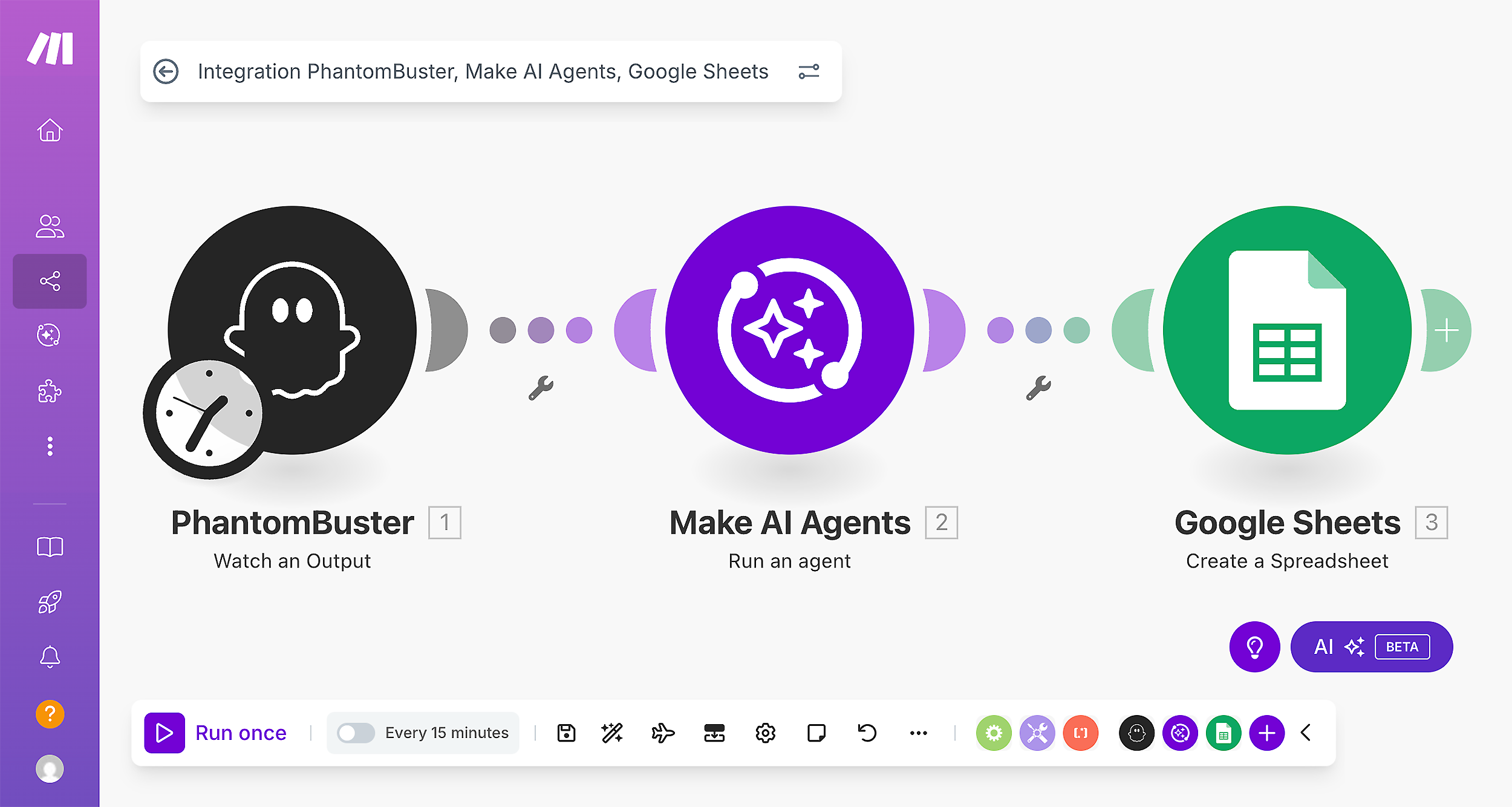
Unfortunately, that gave me the exact same result (only this time in spreadsheet format, woohoo!):
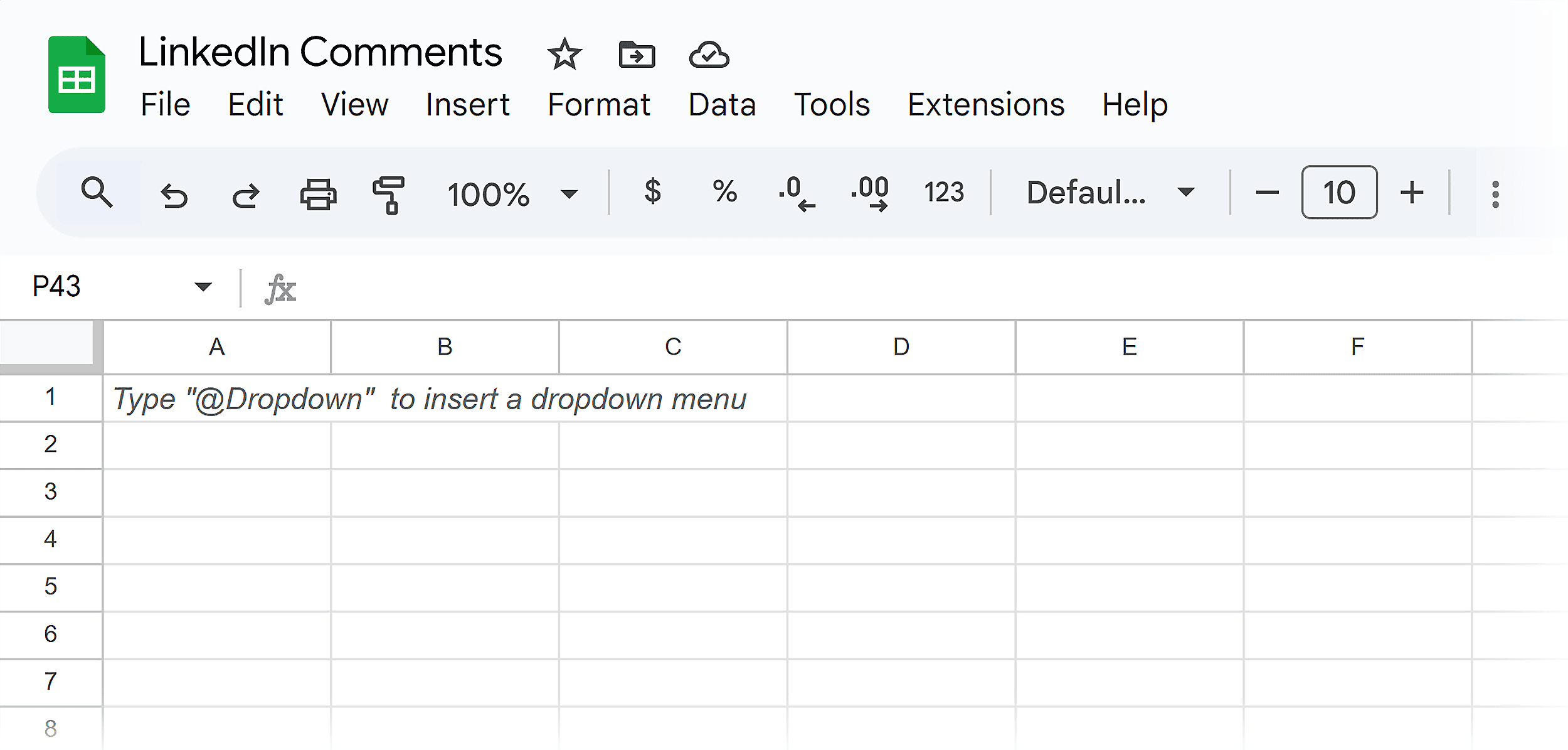
What especially irked me was that the automations themselves were running successfully. But I still had no output.
So after more than four hours of work (and a lot of back-and-forth with ChatGPT), I finally gave up.
Could I have figured out this AI workflow eventually? Yes, I have no doubt.
But at that point, how much time would I be saving?
Does a little time saved on writing comments justify spending hours building an AI workflow (and what should’ve been a relatively simple one, at that)?
Here’s what I learned from this experiment:
If you’ve been secretly feeling a little skeptical about vibe marketing, you were right The folks building vibe-coded apps and AI workflows in five minutes have years of practice. The rest of us can’t expect the same speed. The tools that are currently available for vibe coding and AI automations aren’t ready yet for the average user to just jump in and build If someone with a background in tech (me) struggled so much with a simple workflow, imagine the challenge of something more complexAnd while it’s true that others are seeing success with vibe marketing (like the examples that we saw above), there are also clear downsides.
It’s Not All a Bed of Roses: The Caveats of Vibe Marketing
Vibe marketing is like any new marketing buzzword: We all love to join in the hype, even if we don’t quite get it.
The problem is, the hype can obscure reality.
After running my own experiments, I also talked with other experts in the field. What emerged was a clear pattern — vibe marketing is powerful, but the gaps between promise and practice are real.
It’s Harder Than It Looks
The idea that you can tinker around with AI for five minutes and produce a usable workflow just isn’t feasible for the majority of us.
And yet, that’s the promise we’re seeing over and over again:
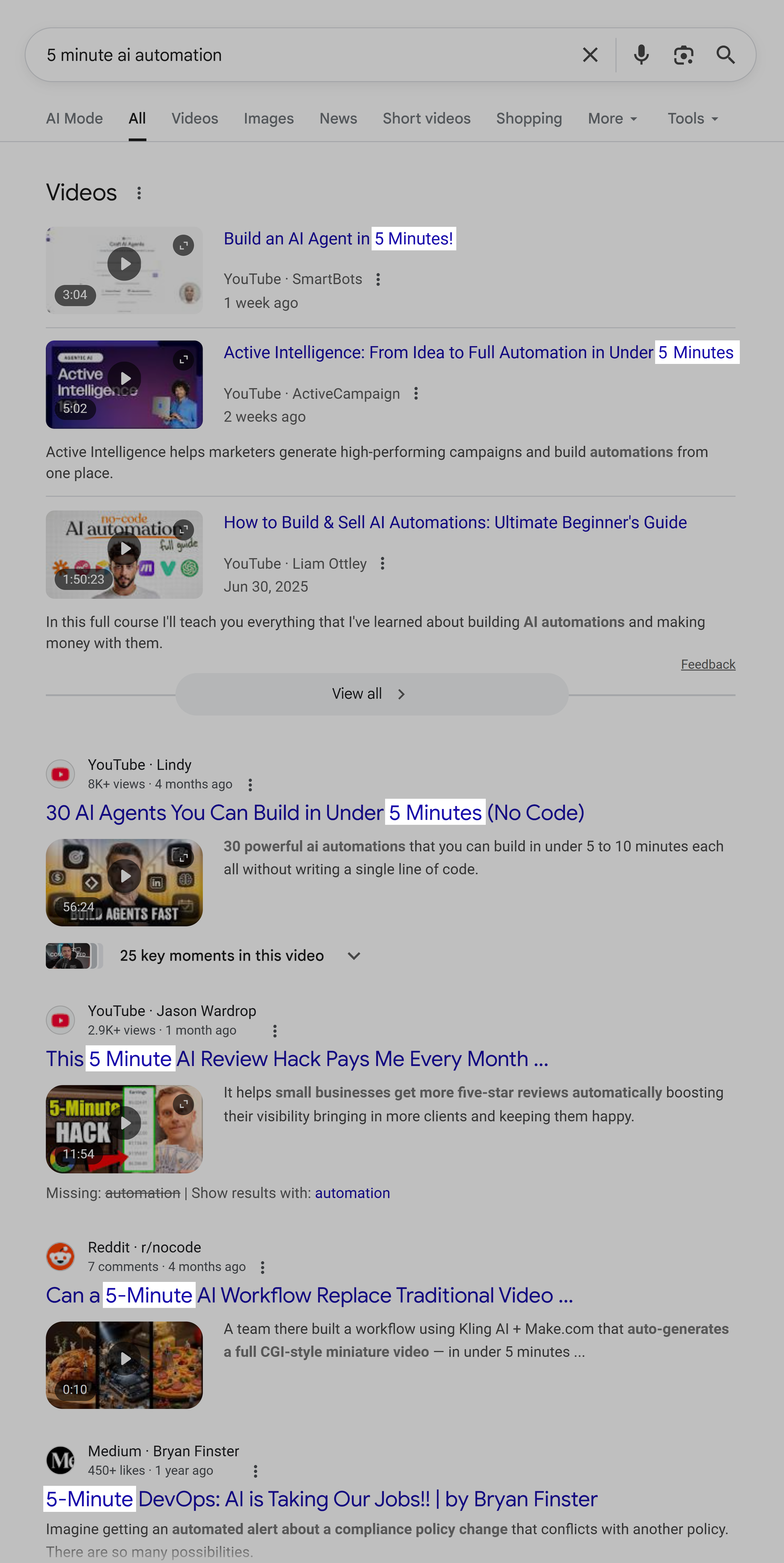
This all sounds great, but we’re marketers: We know better.
Simple automations? Sure.
But robust, real-world systems usually need engineering support or serious AI chops.
Without that, you risk fragile prototypes that break the first time they’re stress-tested.
Oren Greenberg, the AI marketing consultant we talked about earlier, told me:
Here’s the point: Don’t get swept up in the hype. Check the source.
The Infrastructure Is Messy
AI workflows look slick in a demo. But in practice, you have to plug into your marketing stack.
And that’s where things get complicated.
For example, you might build the perfect AI agent to score inbound leads, only to realize that your CRM can’t accept the data the way you need.
As Austin Hay, Co-Founder of Clarity and MarTech teacher at Reforge, noted in a recent interview:
For traditional marketing teams, this means your AI workflows may not play well with your company’s established martech systems.
And if your tech’s API documentation is outdated (or worse, nonexistent), it will be nearly impossible to vibe code your way to integrations between existing tools.
AI Can’t Invent Outside its Datasets
Another misconception around vibe marketing is that you can throw any messy, undefined problem at an AI agent and it will figure it out.
The reality is less glamorous.
AI thrives on patterns it’s seen before. Point it at a well-scoped, repeatable task, and it shines.
But ask it to invent outside of its training data — or solve a fuzzy, novel problem — and you’ll end up with loops, errors, and wasted hours.
Speed Only Works When You Know Where You’re Going
AI can help you move fast. But if you don’t know what metrics matter and where you want your workflows to lead, faster will just mean getting lost sooner.
Marketers who succeed with vibe coding are the ones who define the finish line first. AI then becomes a vehicle to reach those goals faster, not a substitute for setting them.
Kevin White, Head of Marketing at Scrunch AI, put it this way in a recent interview:
Vibe Marketing Tools Free Up Time…But for What?
As more marketers build AI workflows and vibe code their way to productivity, a philosophical question arises: why?
AI workflows and automations free up time (when they work). But, what are we freeing up time for?
By eliminating the busywork, we’ve saved only the most demanding tasks for ourselves. And while creating and strategizing may be what we enjoy most, it’s impossible for most people to do that kind of mentally-taxing work for eight hours straight.
Eric Doty, the one-man content team at Dock, explained it like this:
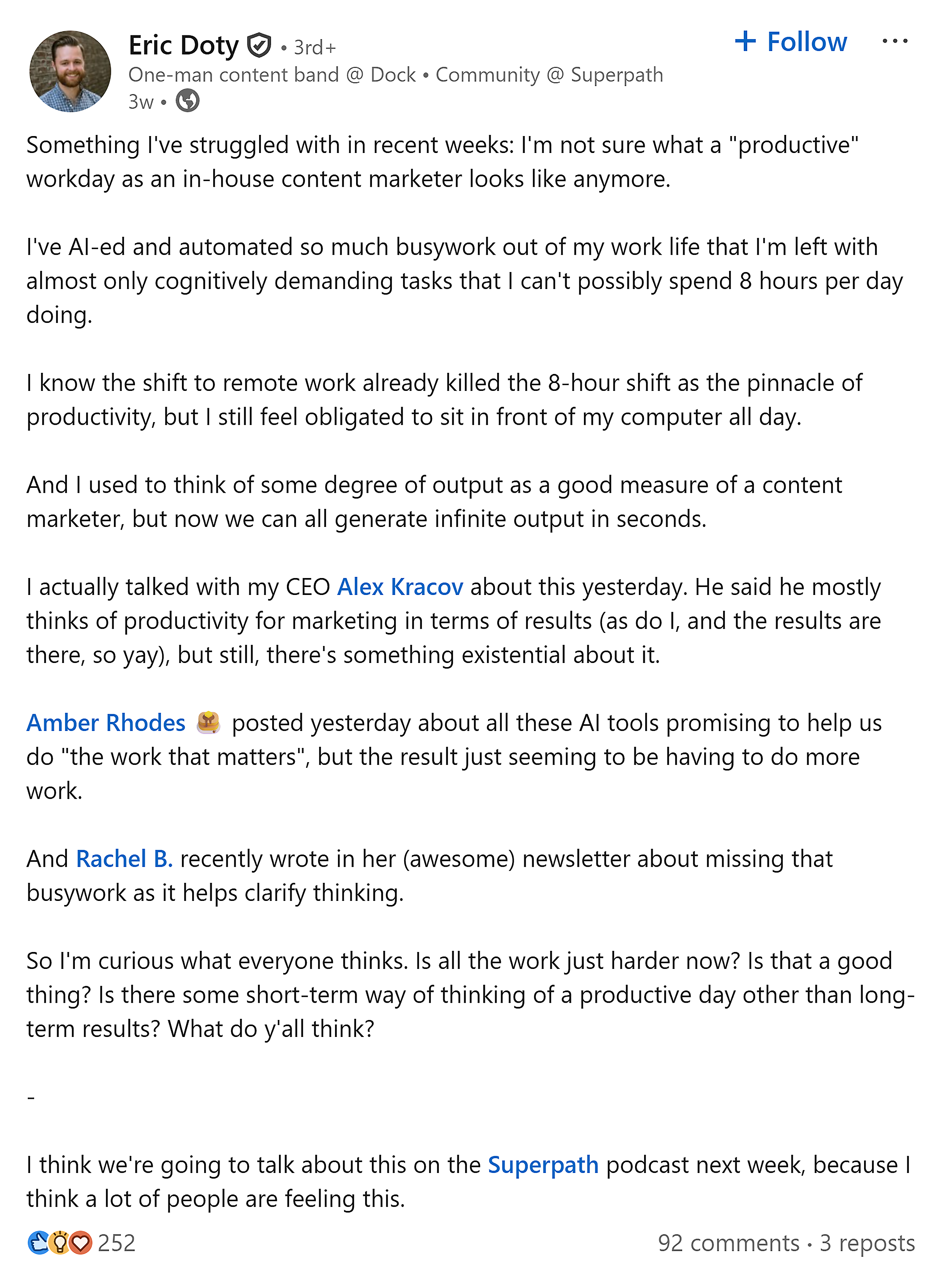
The questions to ask: Are we automating the right things? Are we automating for the right reasons? And how are we using the time saved?
How to Know if Vibe Marketing Is Right for You and Your Business
You may be a marketer in a traditional team with limited resources and a lot of big ideas to execute on.
Or, you might be a solo marketer looking to reduce busy work.
Either way, you’re probably looking at AI as a solution to increase productivity. Even if you worry it’ll steal the humanity from your campaigns.
Still on the fence?
Here are six questions you can ask yourself. Answer honestly, and you’ll have a better view of whether now is the right time to start vibe marketing:
| Do I have repetitive, well-documented tasks I do weekly? | Automation can free you up for strategy and creativity. | Not much to gain from automation yet. |
| Am I clear on what “better” looks like for my role/business? | You can scale the right things. | Risk scaling noise — get specific first. |
| Do I have at least a small dataset (calls, reviews, CRM notes)? | AI can pull real insights from your data. | Start gathering data before building workflows. |
| Would freeing up 5–10 hours/week change my impact? | Probably worth experimenting with. | Savings may not move the needle yet. |
| Do I have time/patience to refine AI outputs? | You’ll get compounding returns over time. | Vibe marketing may feel like a distraction. |
| Do I have brand guardrails for AI outputs? | Safer to create external-facing content. | Build your identity/messaging first. |
The goal here isn’t to pass/fail. It’s to spot whether now is the right time to lean into automation. And whether you’ll get a meaningful return.
As Lauren Wiener of Boston Consulting Group said:
Ready to Try Your Own Vibe Marketing Experiment?
Vibe marketing isn’t snake oil. But it’s not a silver bullet, either.
The hype can make it feel like anyone can vibe code and automate their way to a marketing edge. But the reality is far more nuanced.
The marketers getting real value from vibe marketing are the ones with strong fundamentals, clear goals, and often a layer of engineering support behind them.
For the rest of us, the takeaway is simple:
Vibe marketing is worth experimenting with, but it won’t replace strategy, judgment, or hard-won expertise.
Backlinko is owned by Semrush. We’re still obsessed with bringing you world-class SEO insights, backed by hands-on experience. Unless otherwise noted, this content was written by either an employee or paid contractor of Semrush Inc.

 Konoly
Konoly 







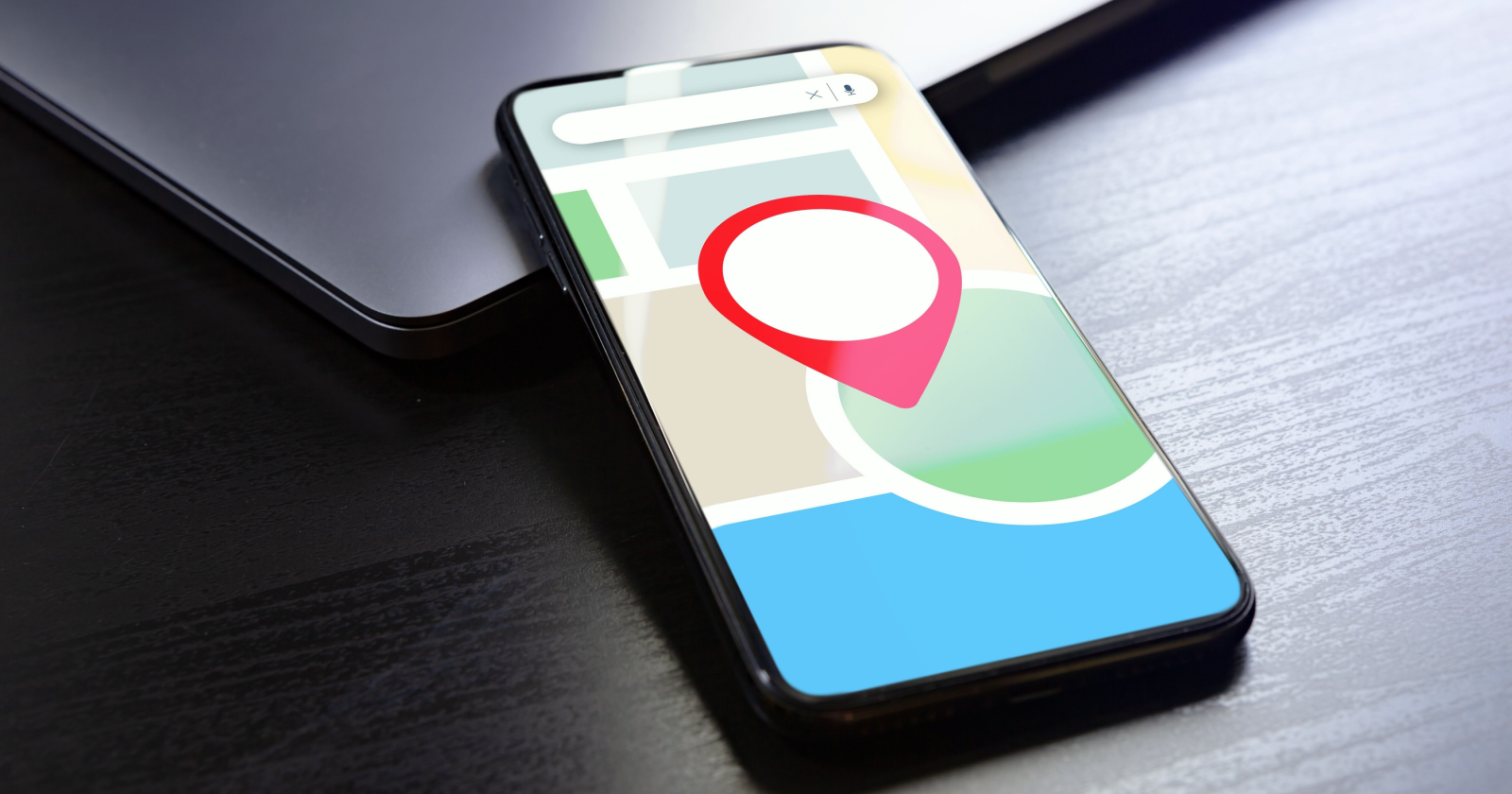
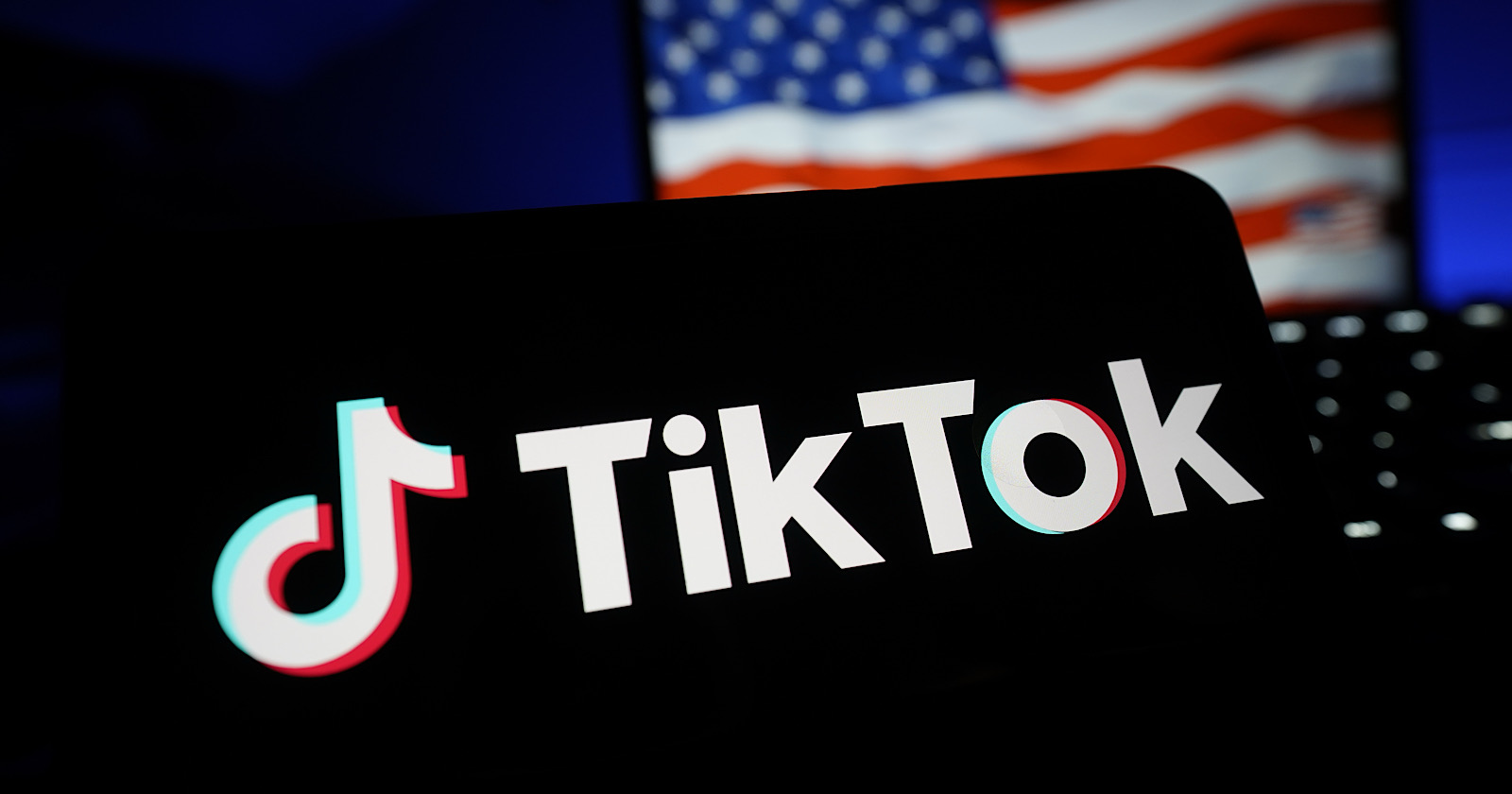

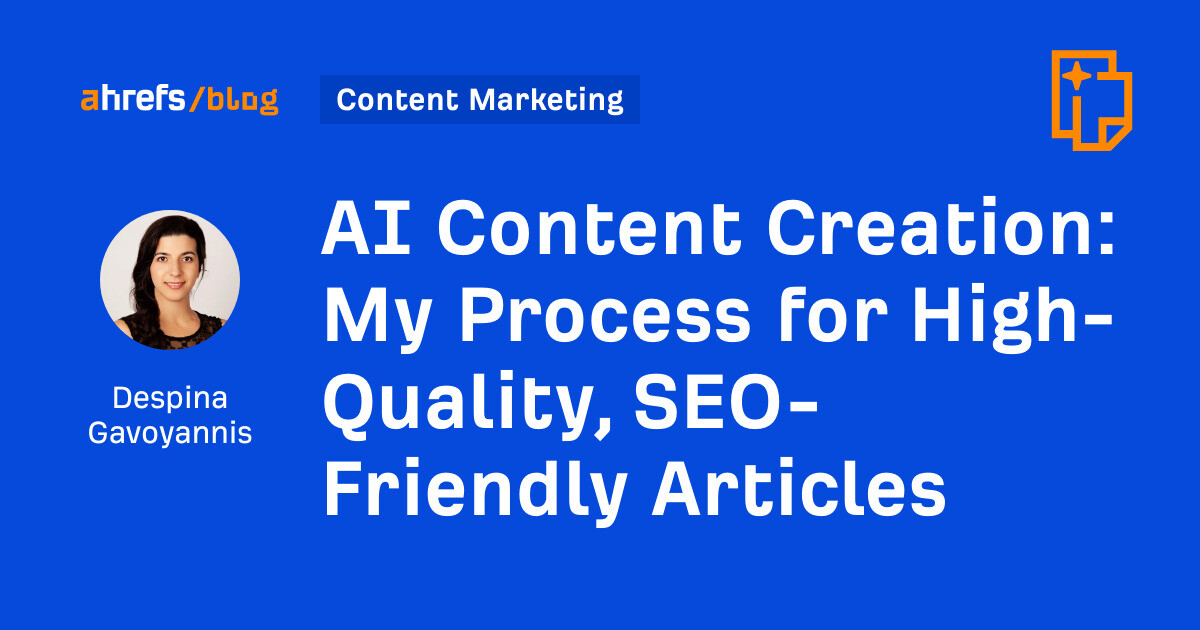

![AI Content Is 4.7x Cheaper Than Human Content [+ New Research Report]](https://ahrefs.com/blog/wp-content/uploads/2025/06/ai-content-is-4.7x-cheaper-than-by-ryan-law-data-studies.jpg)












.jpg)


